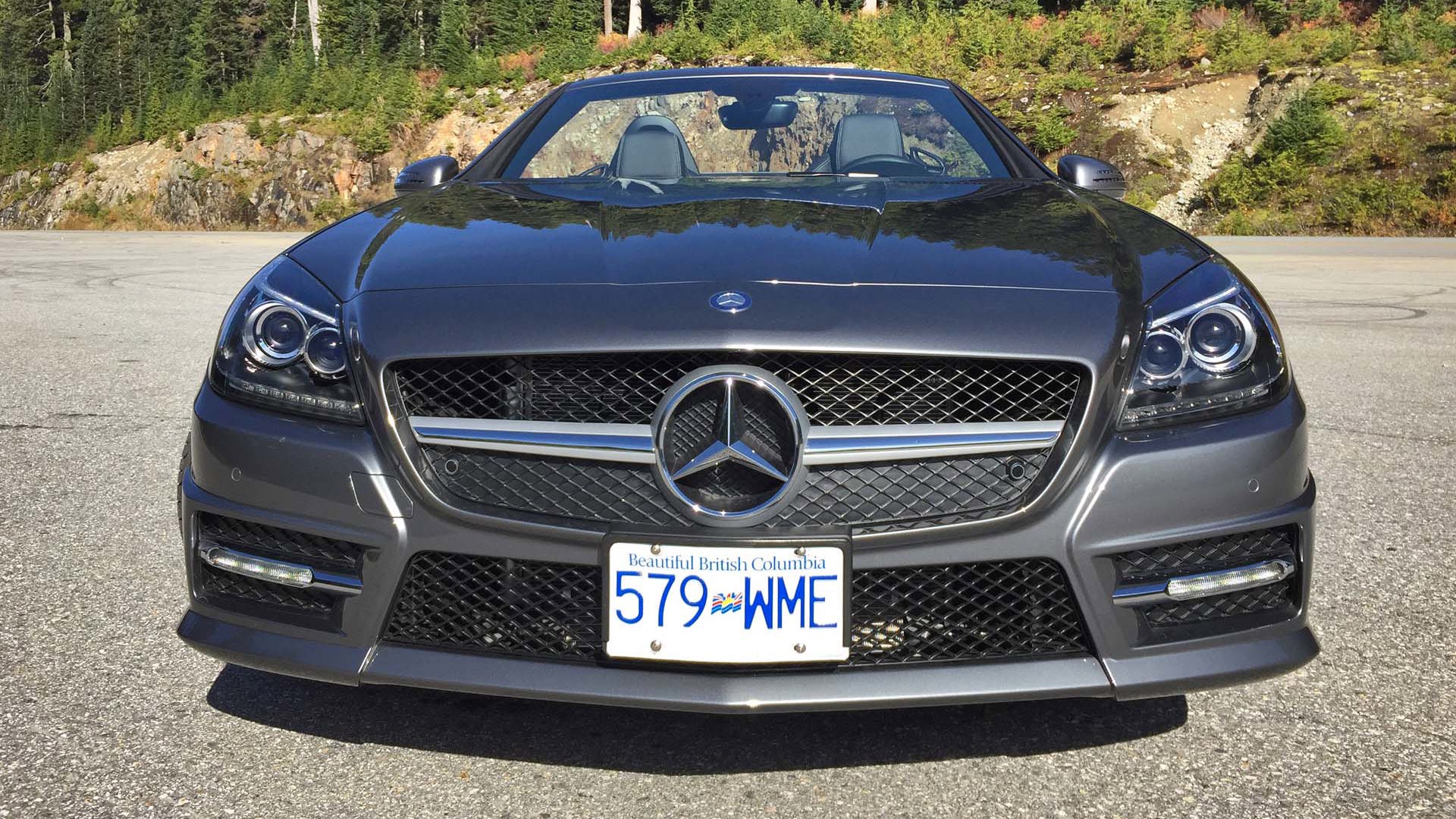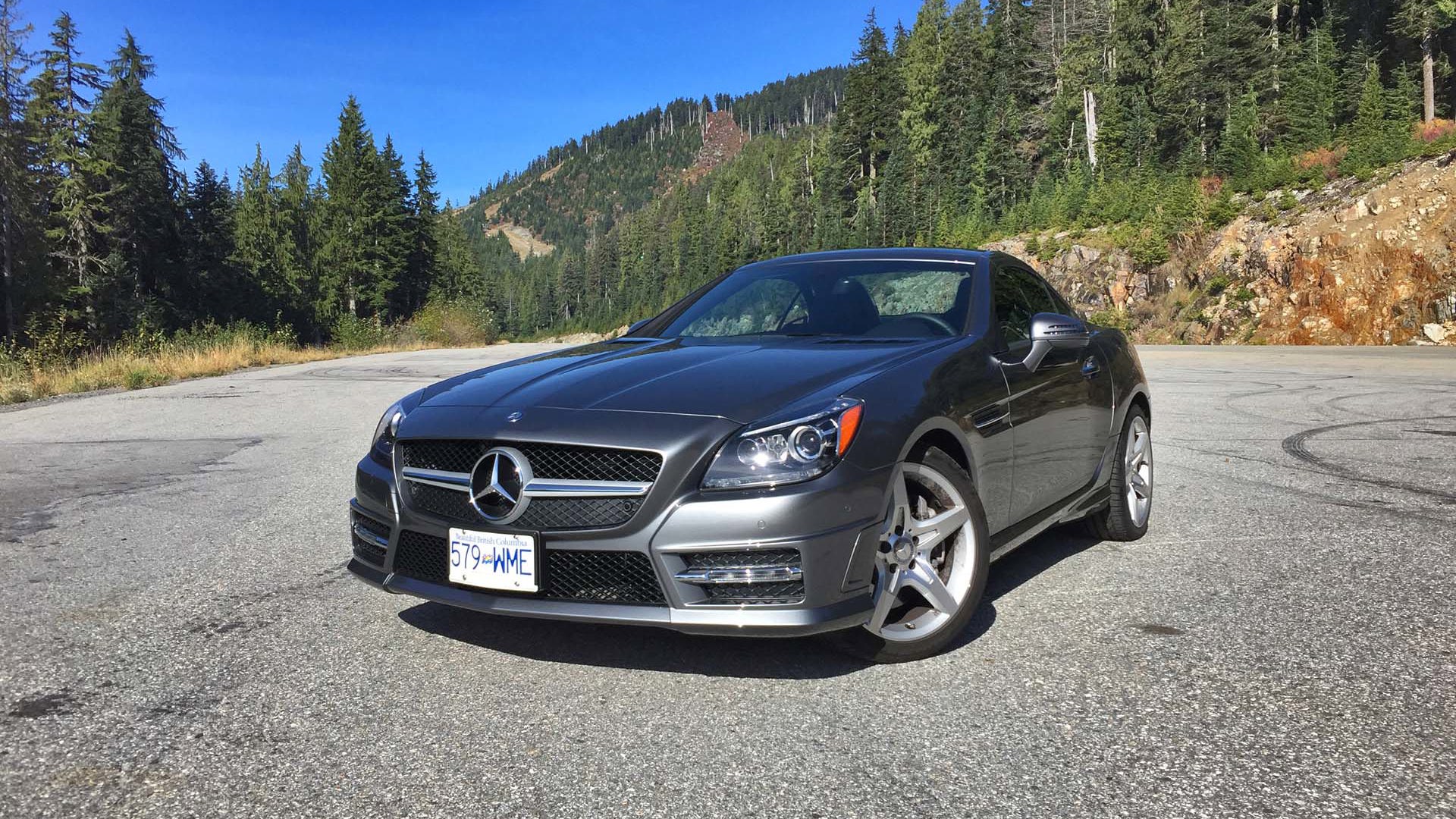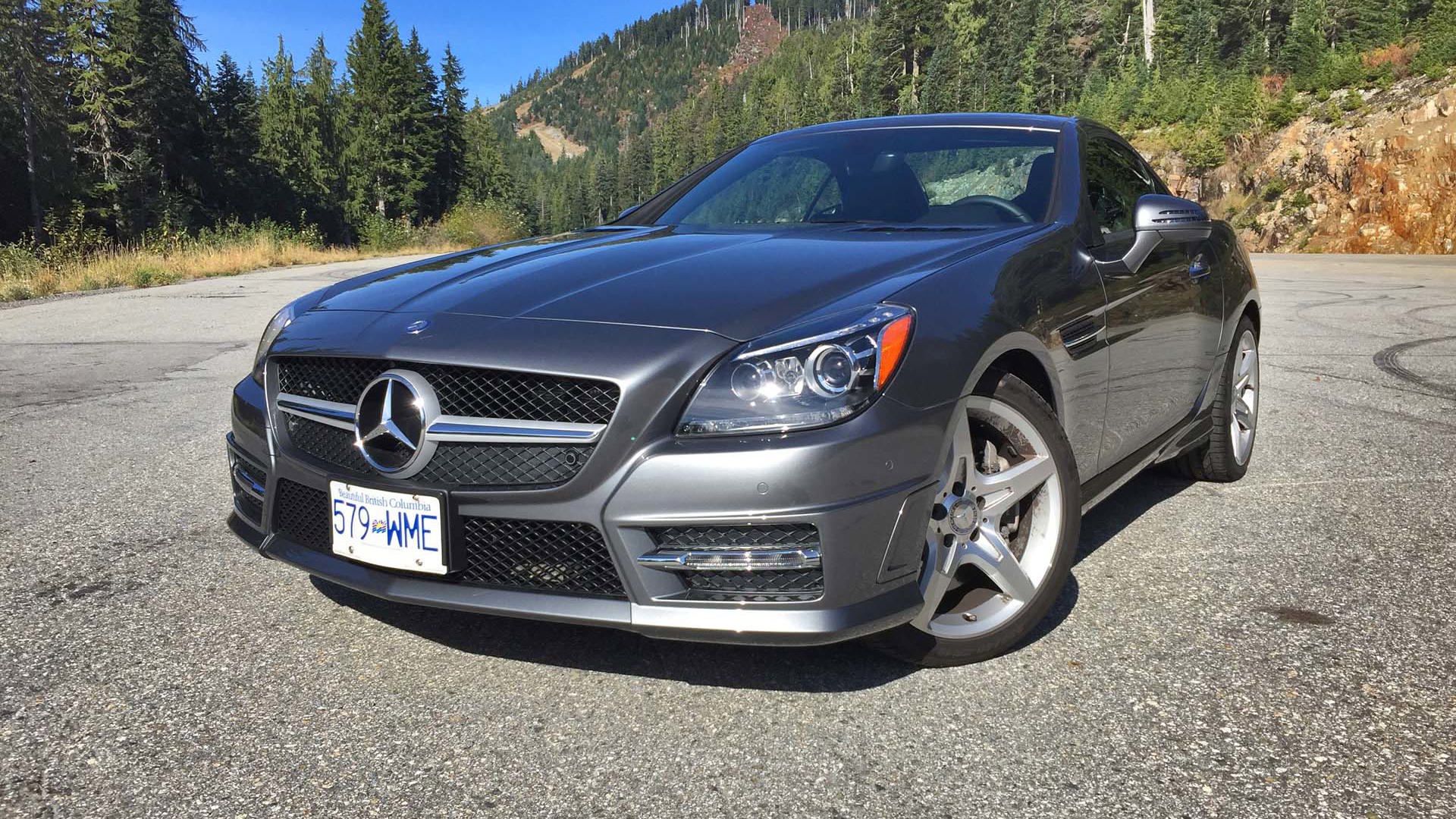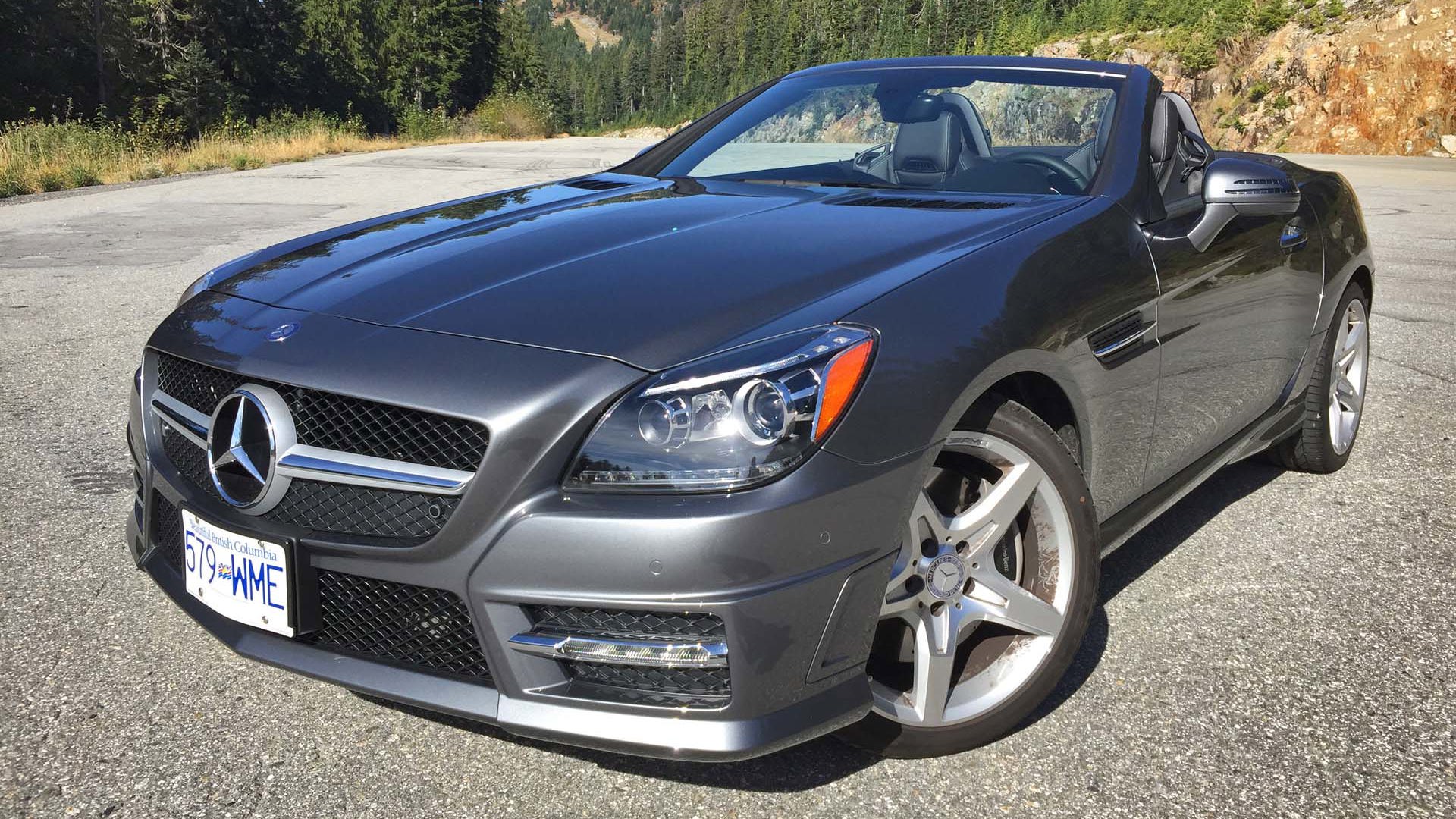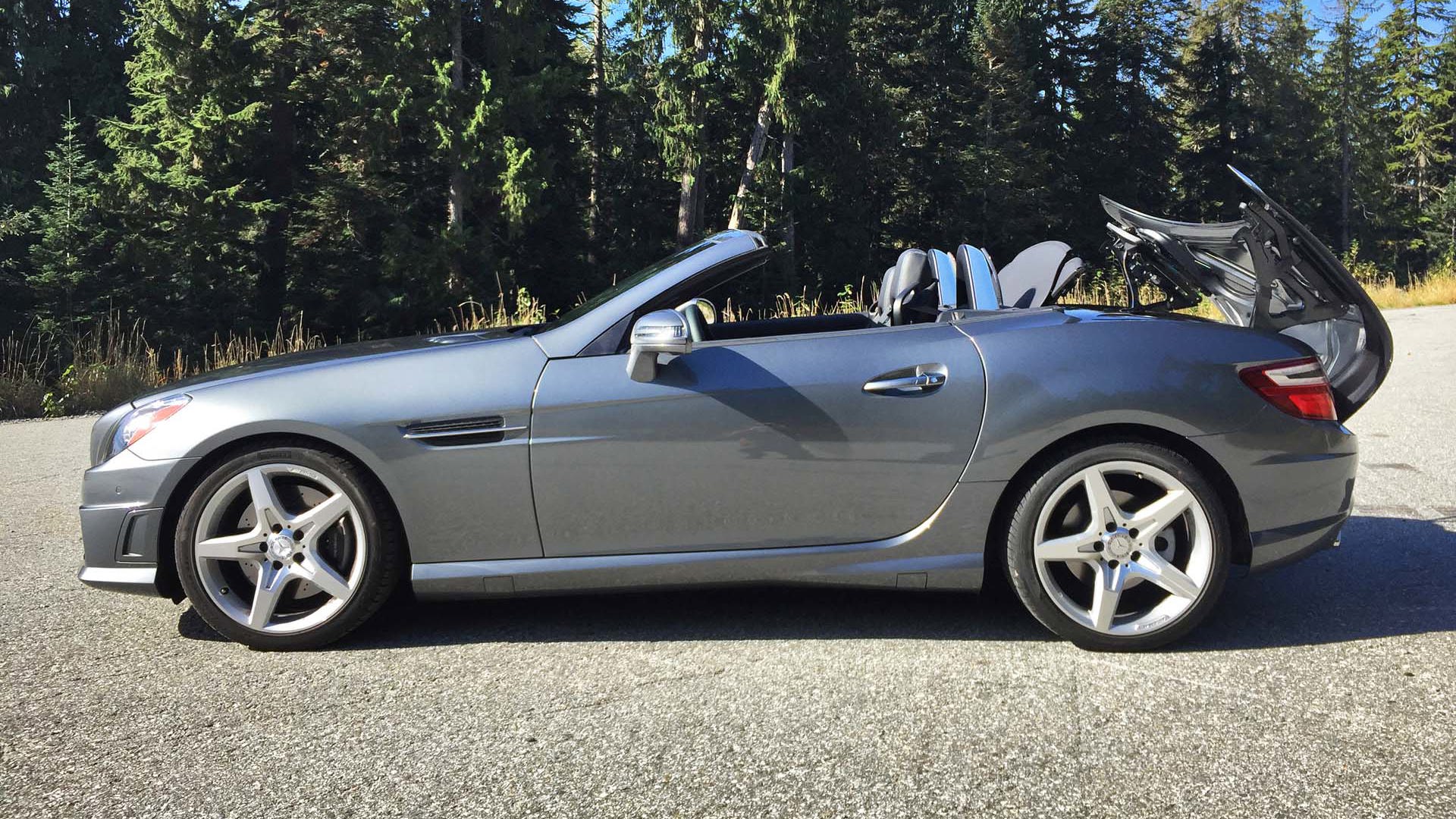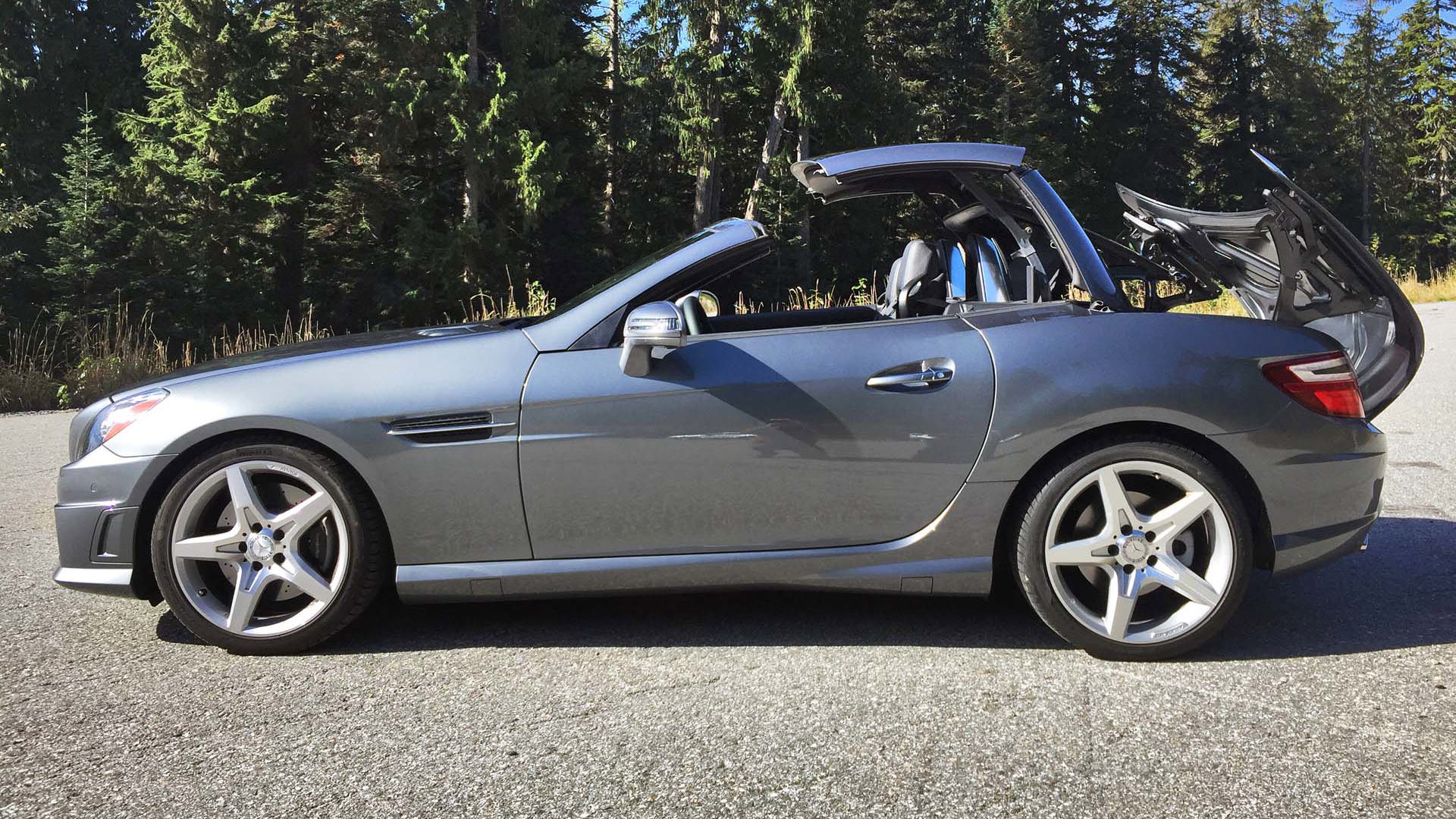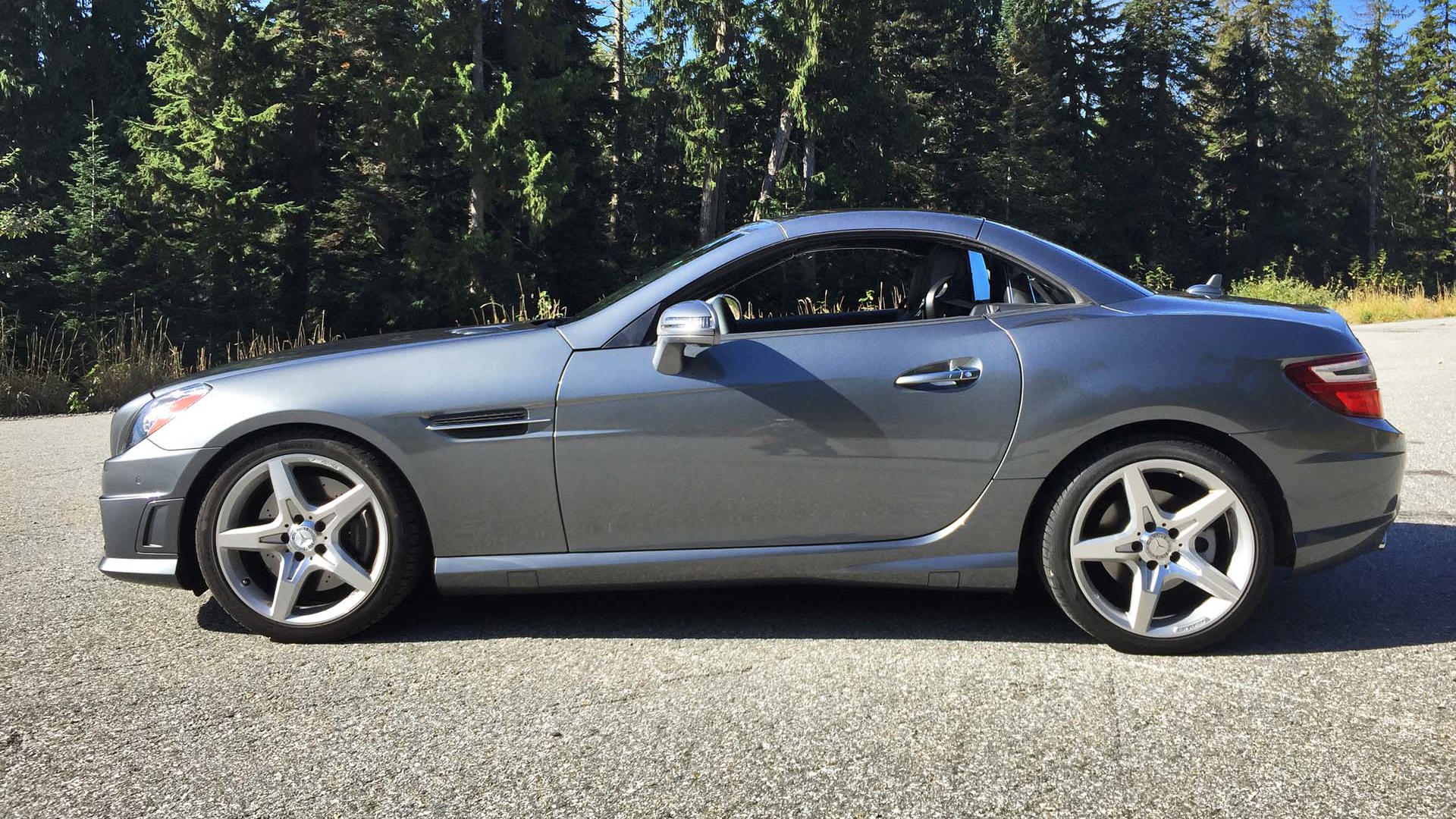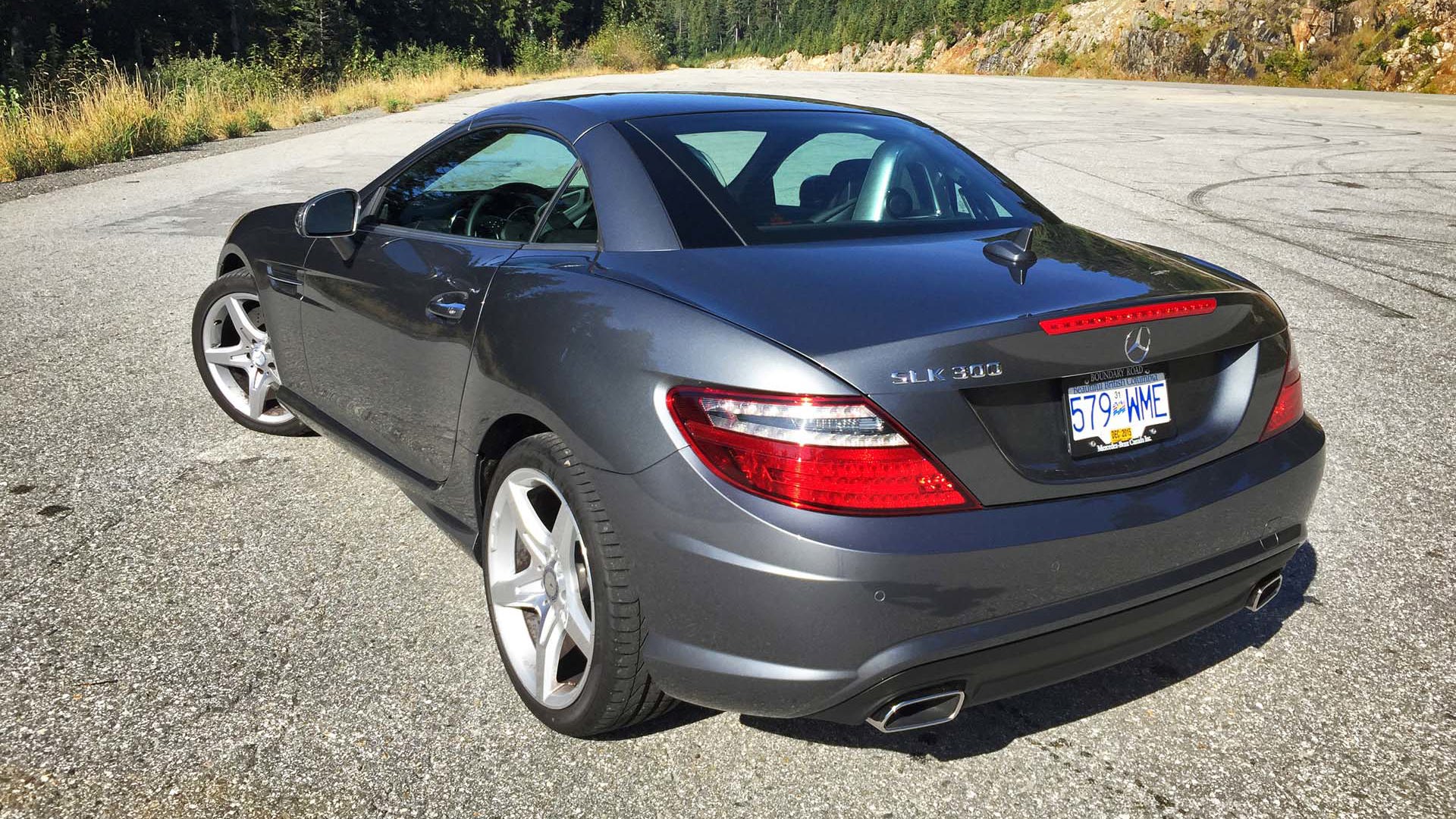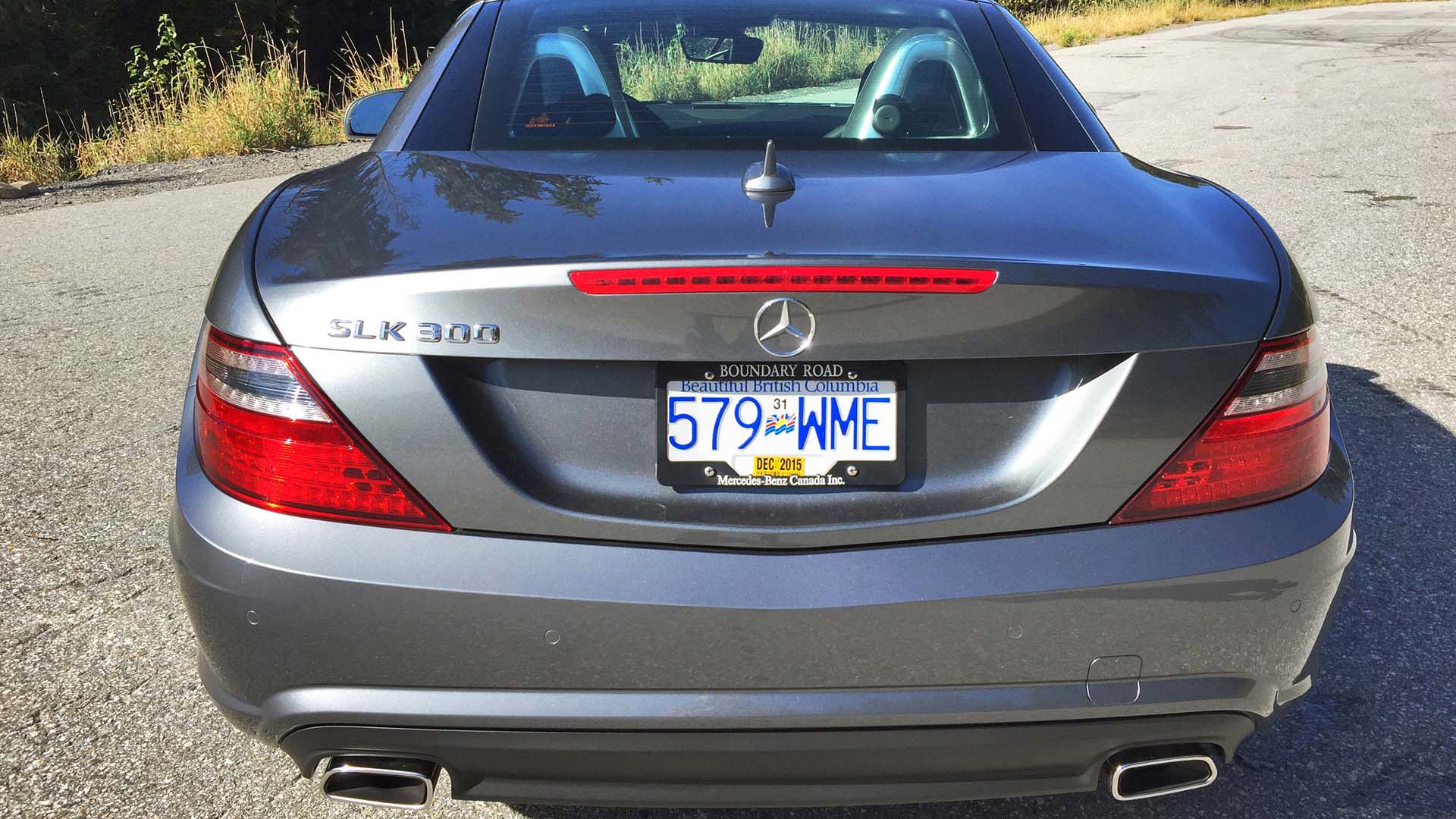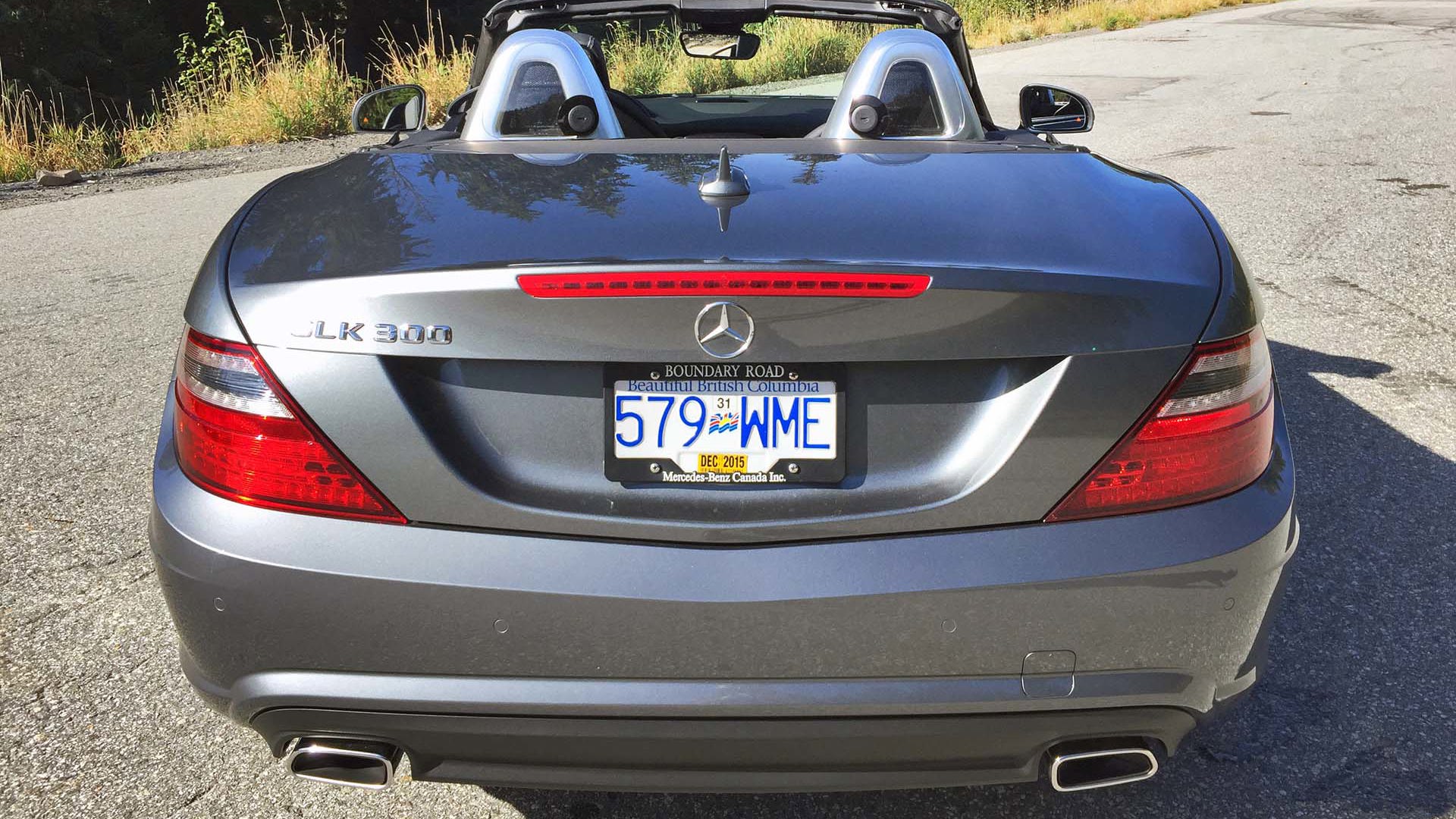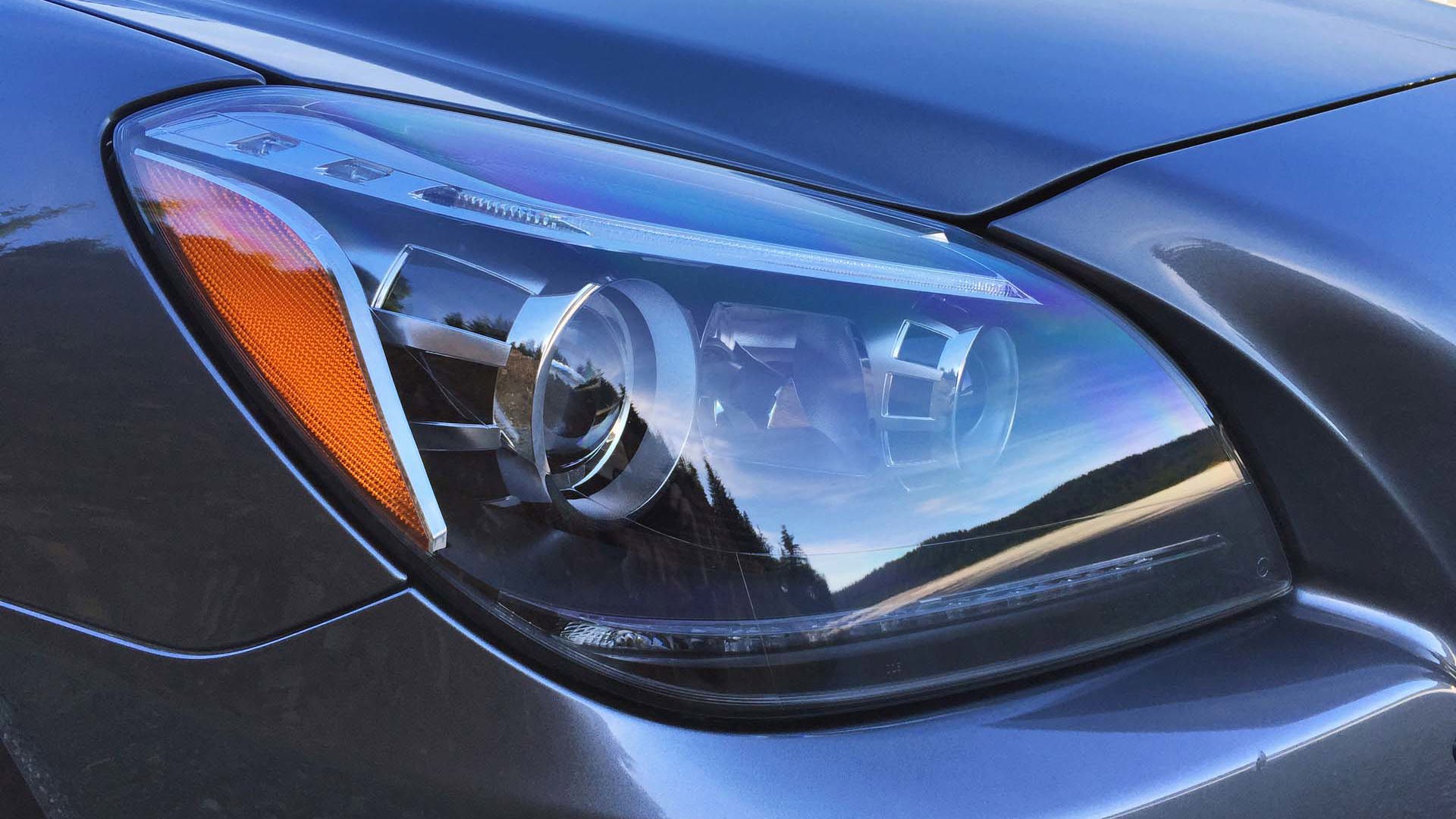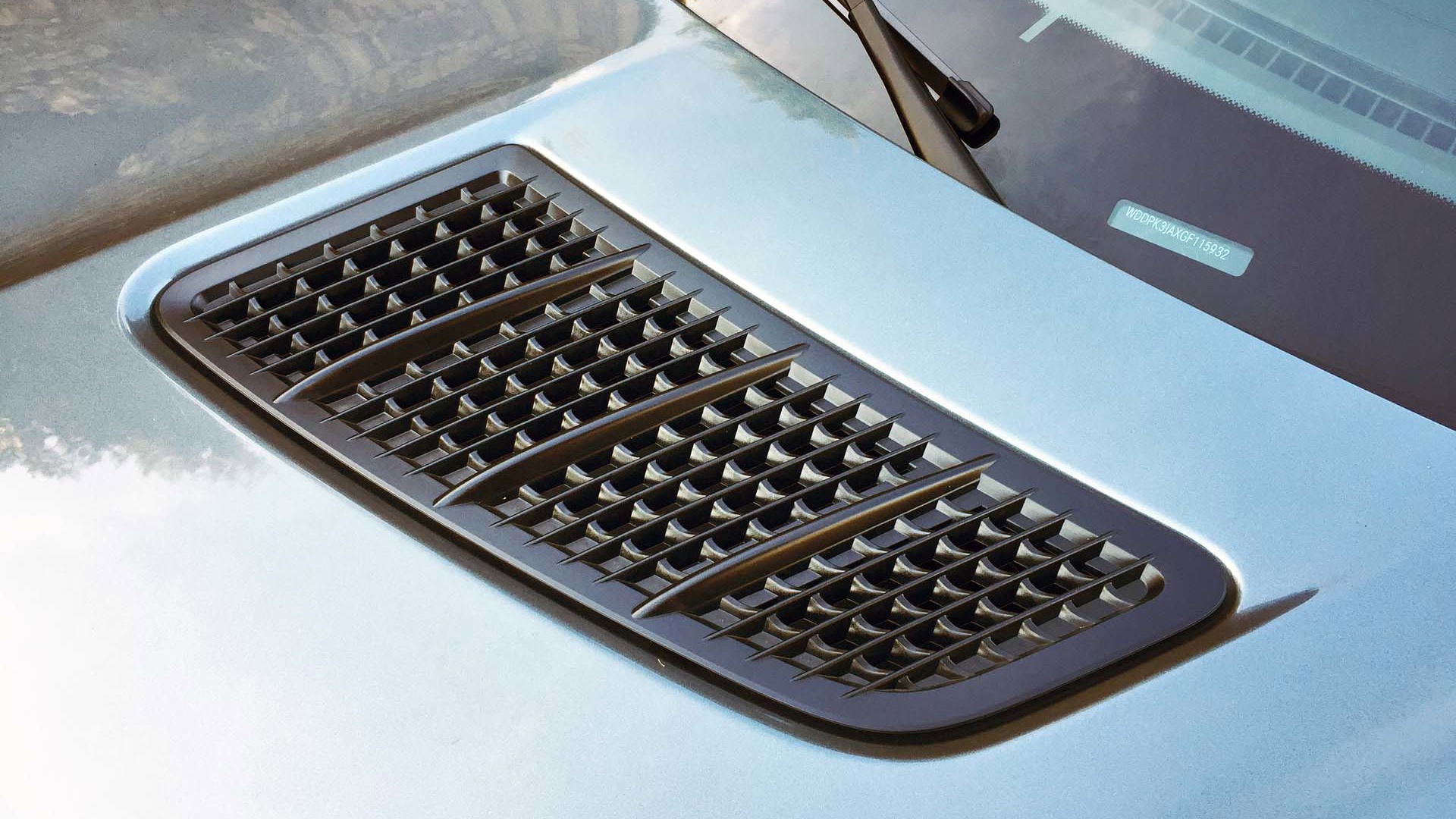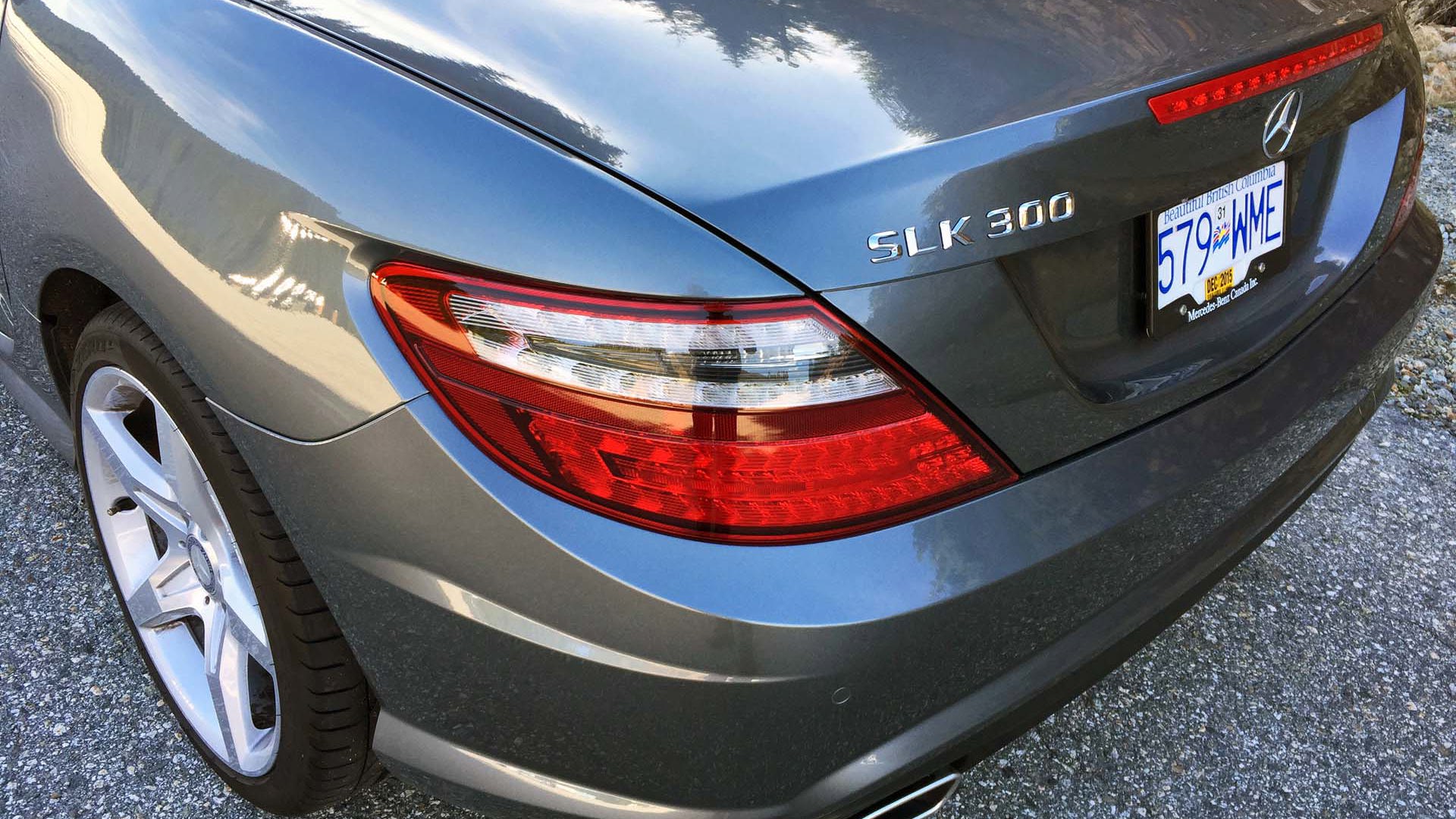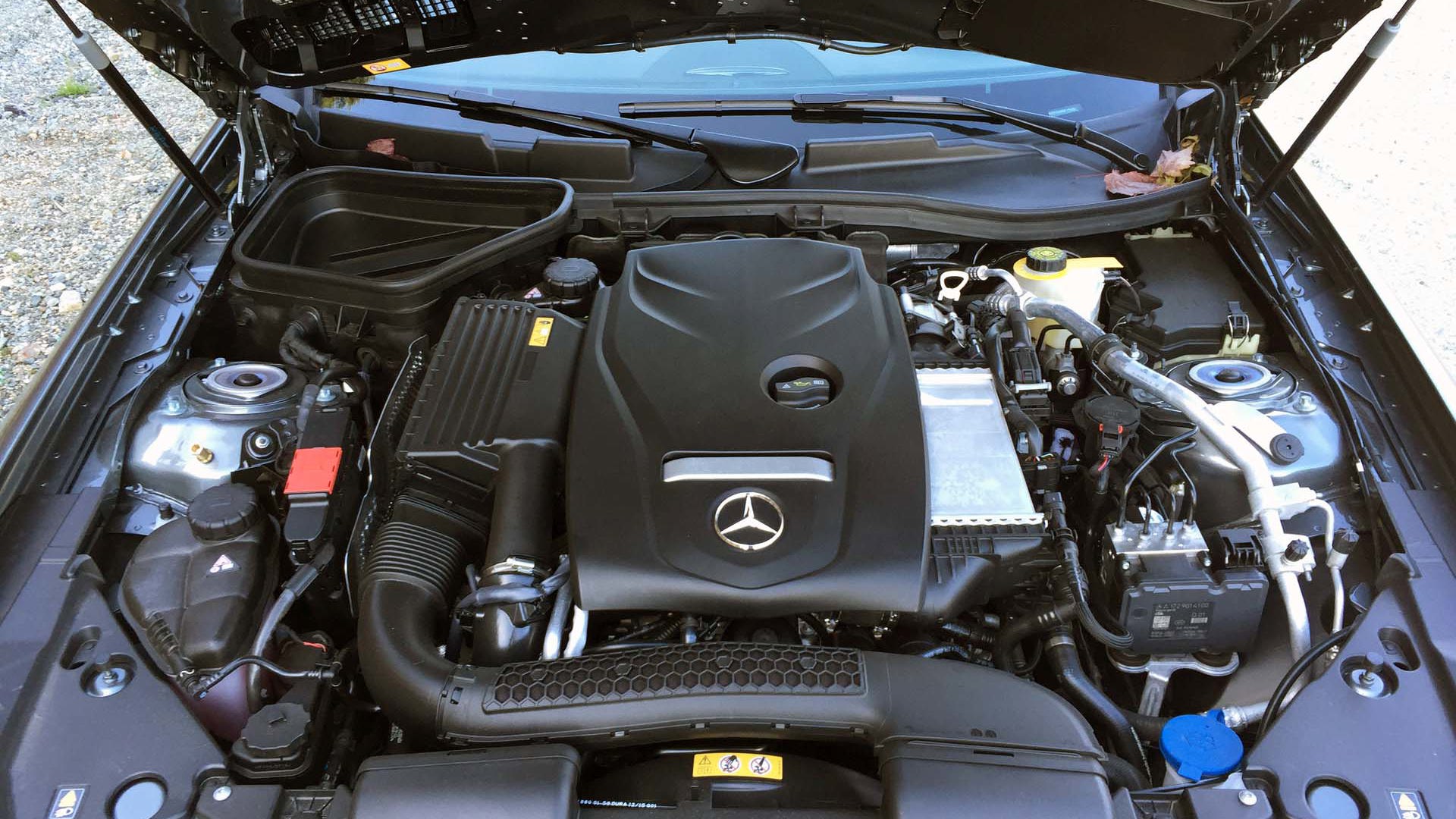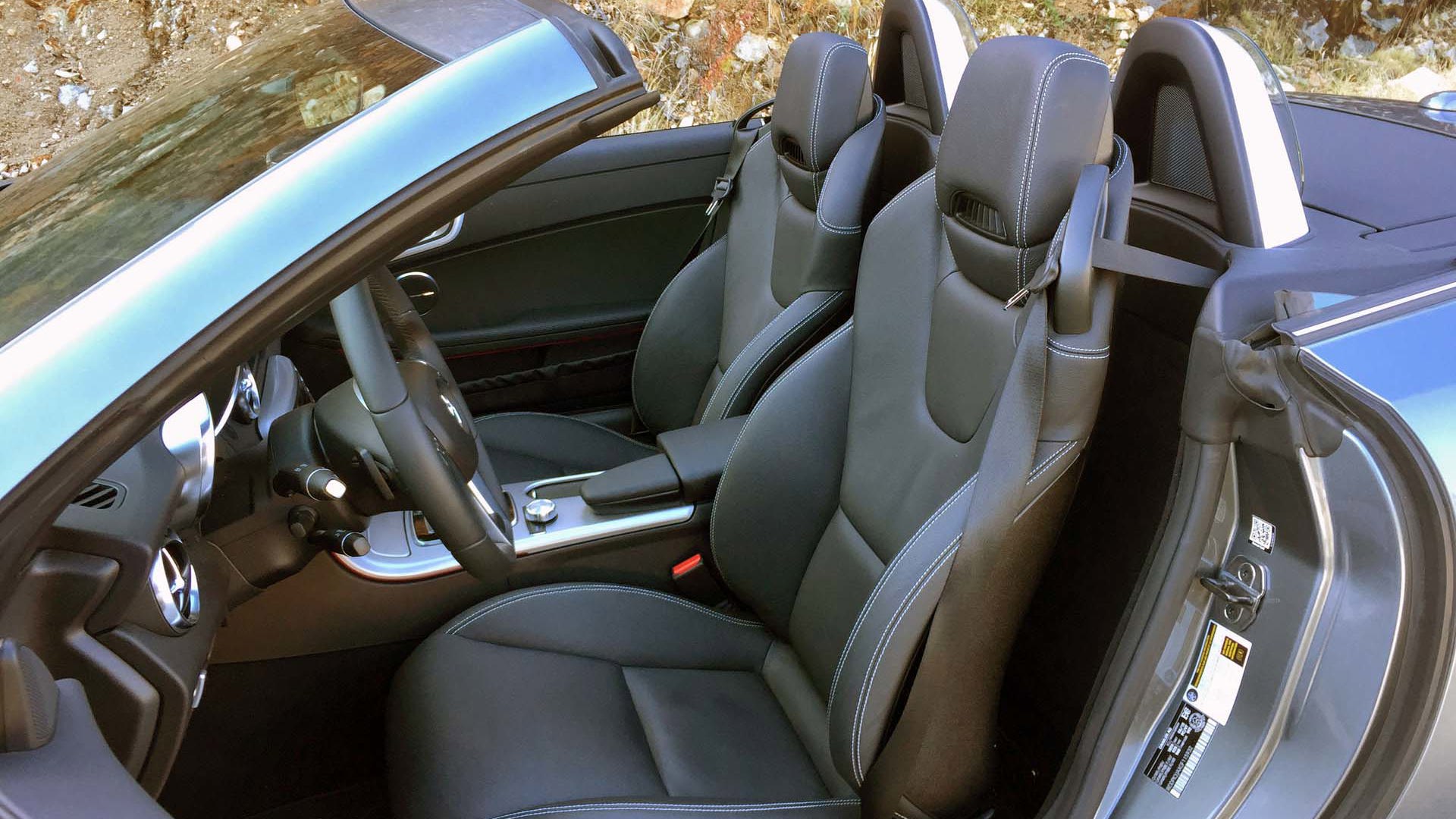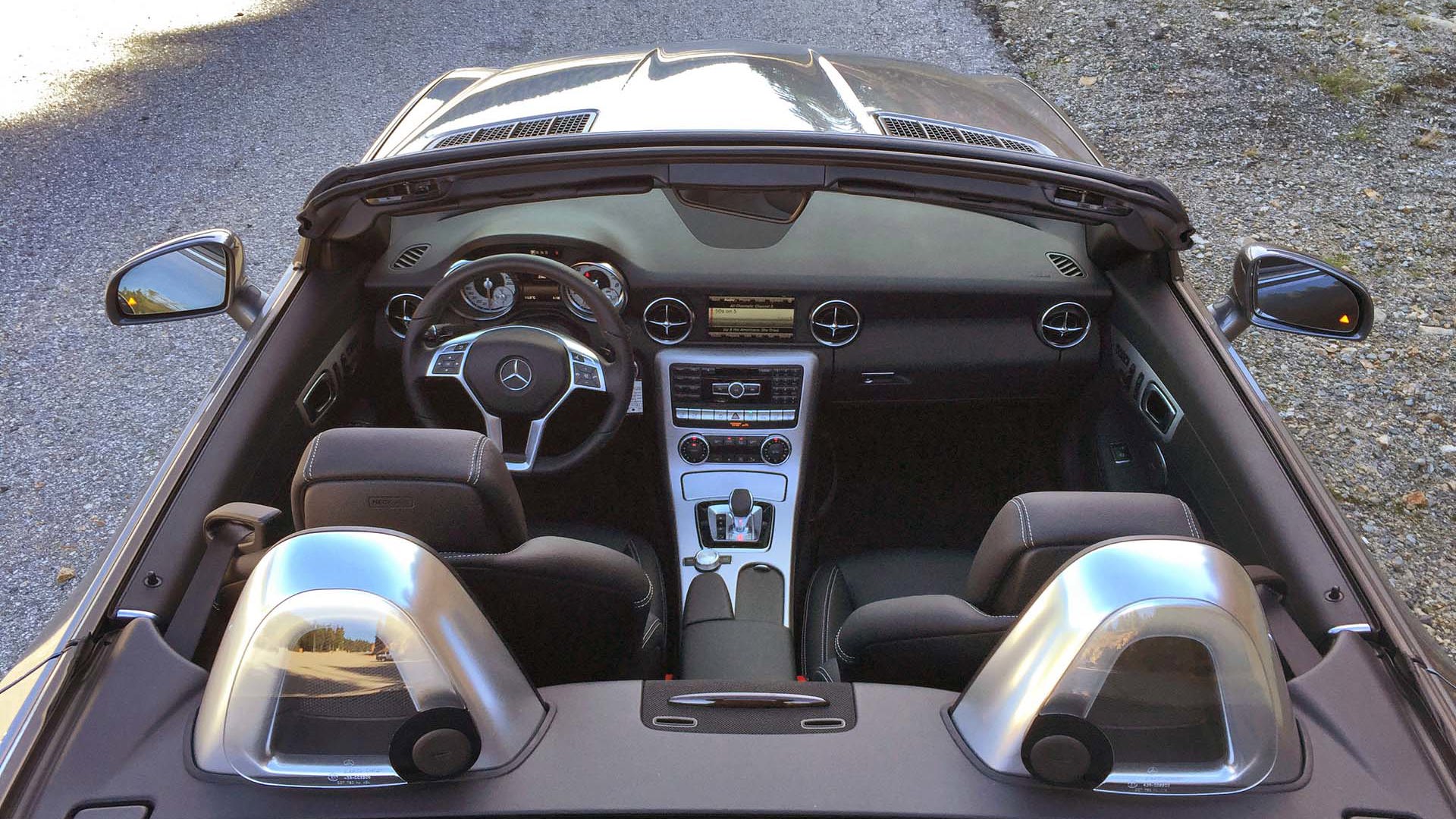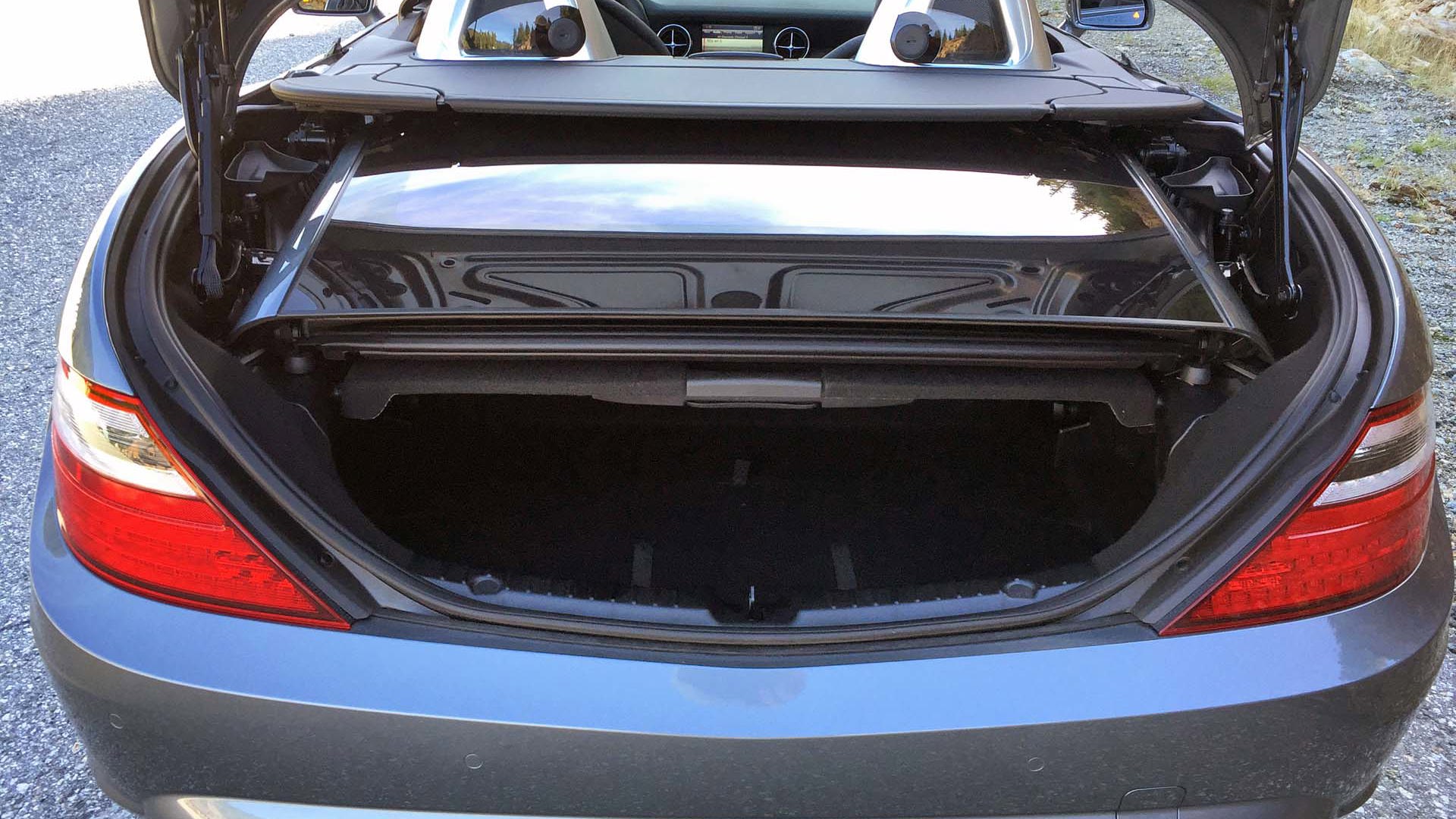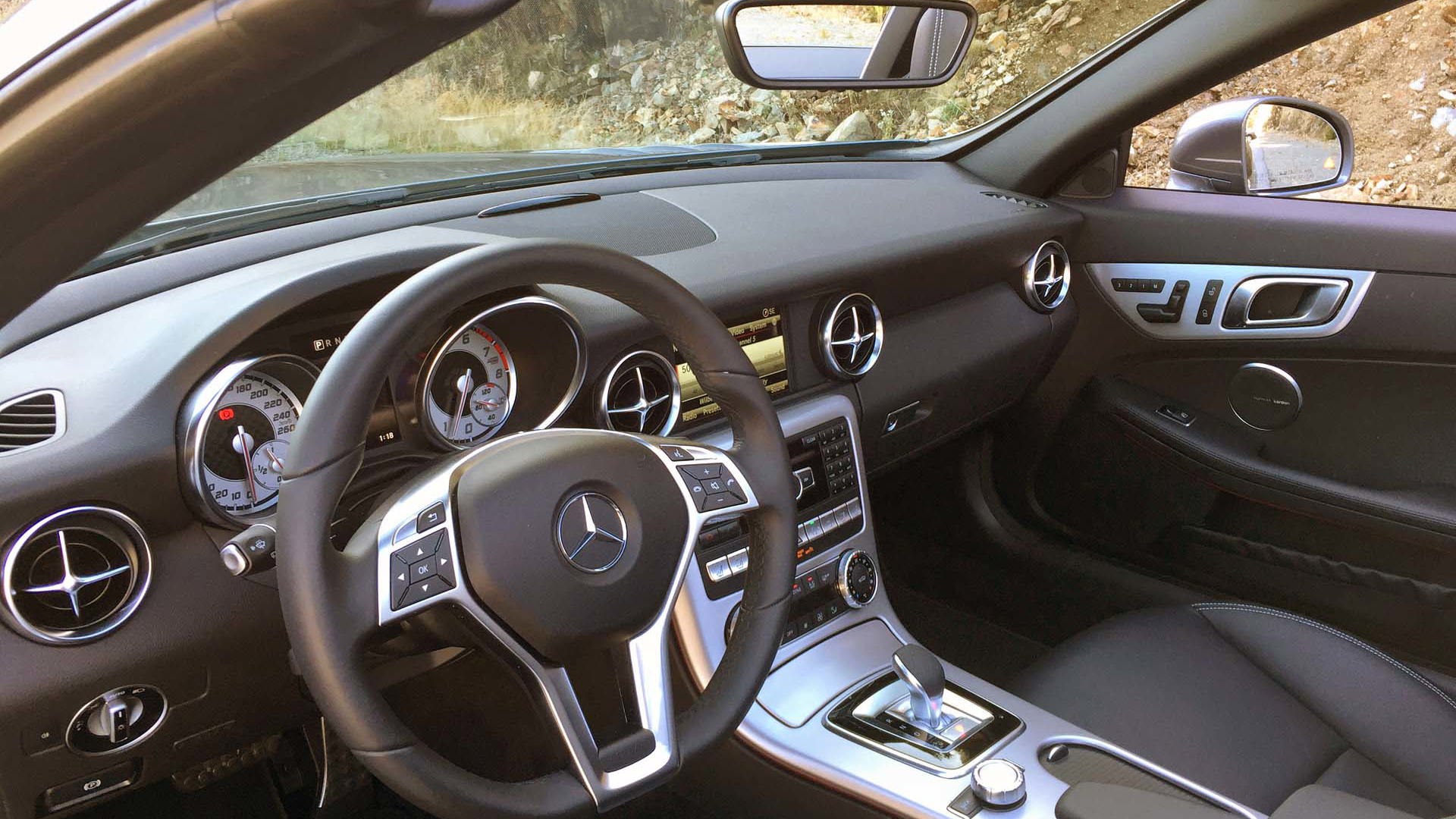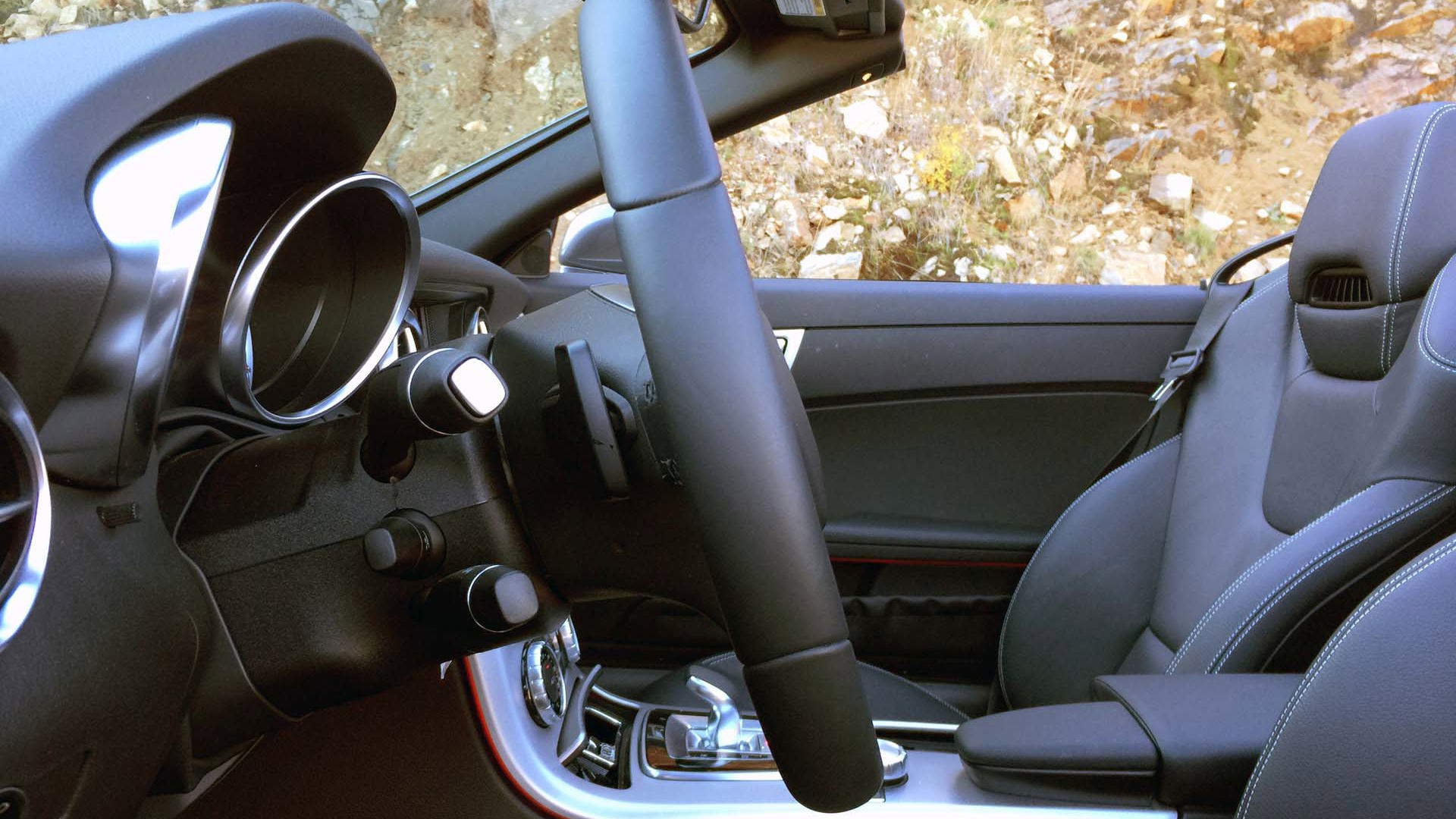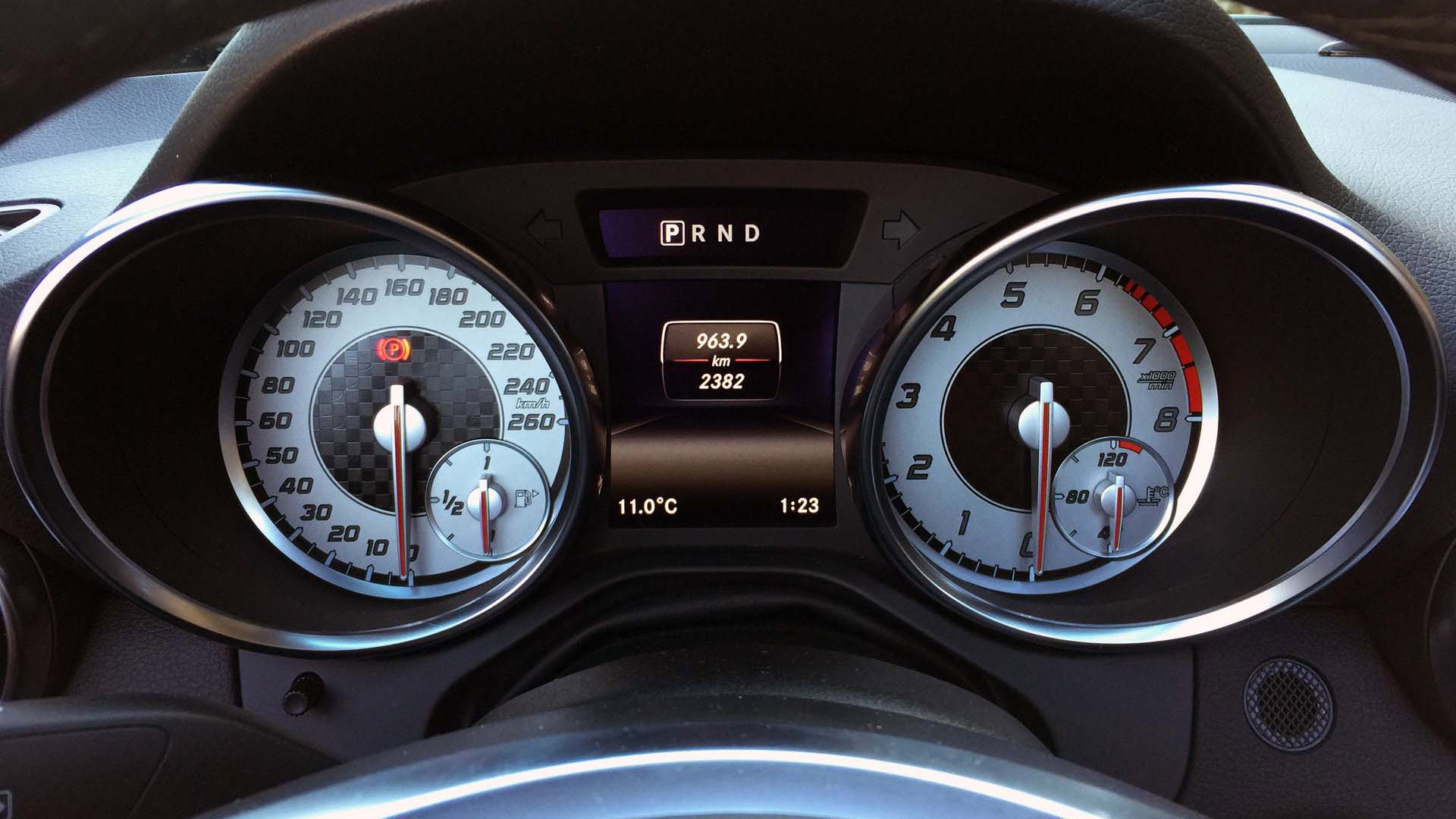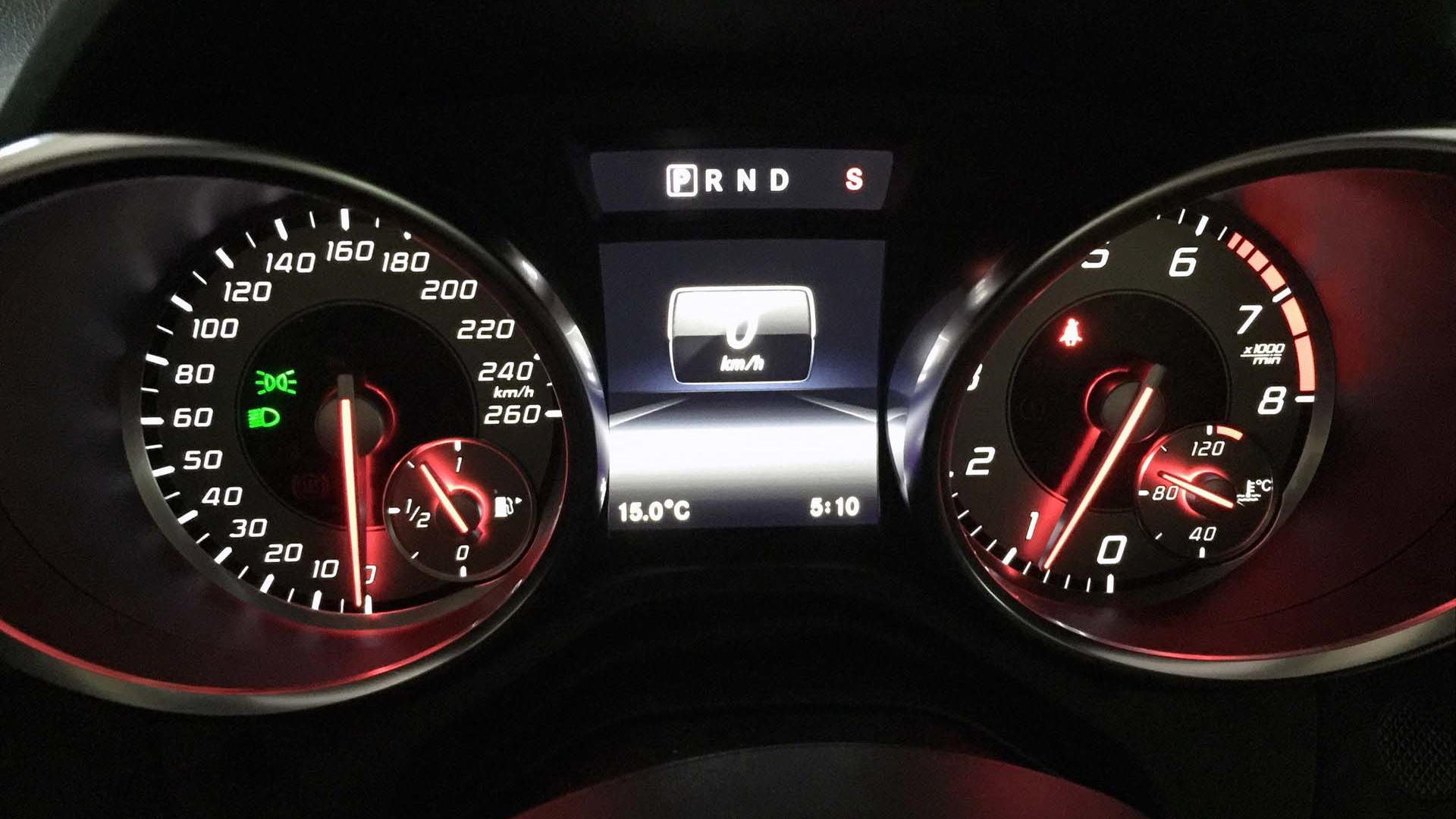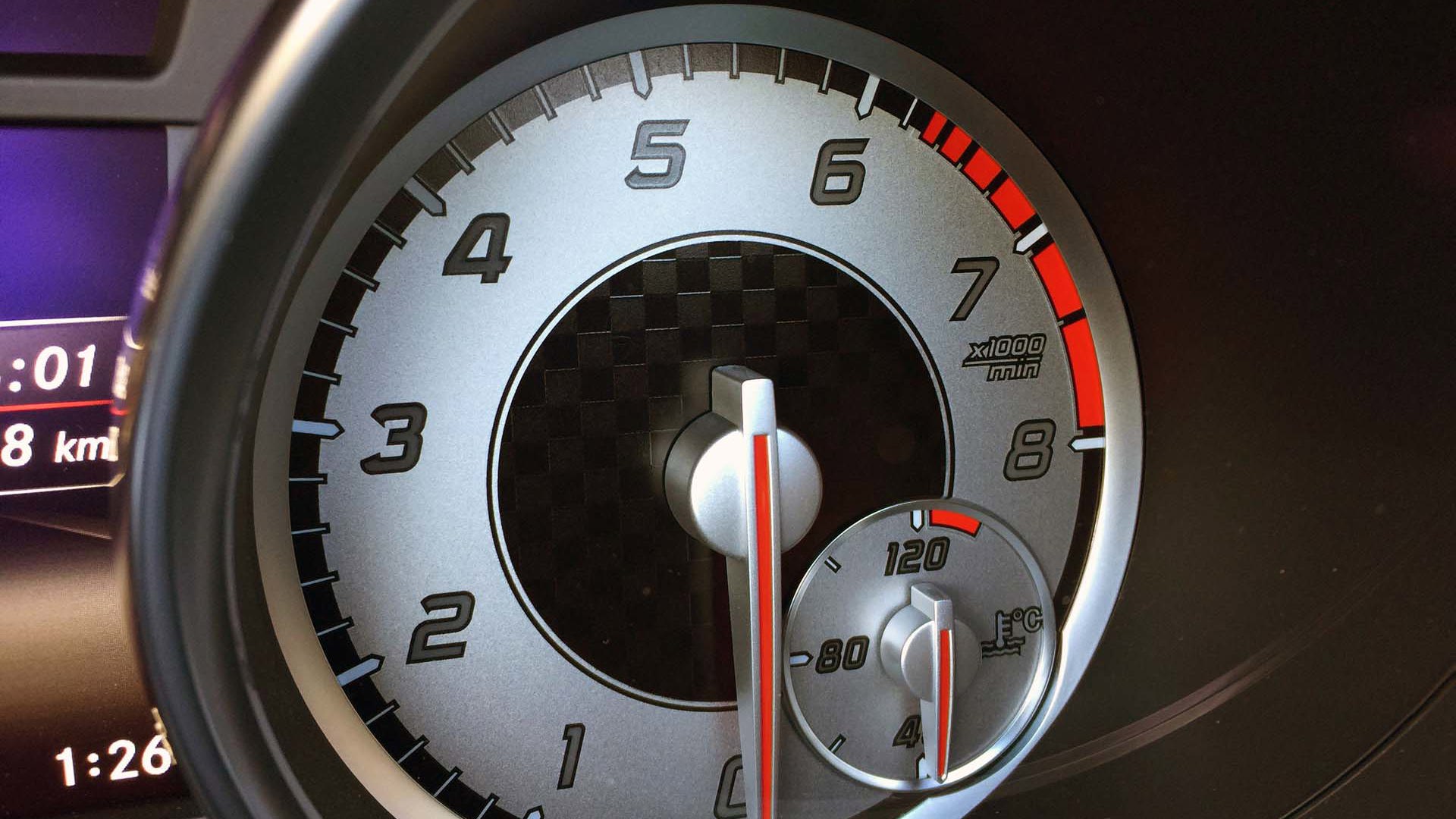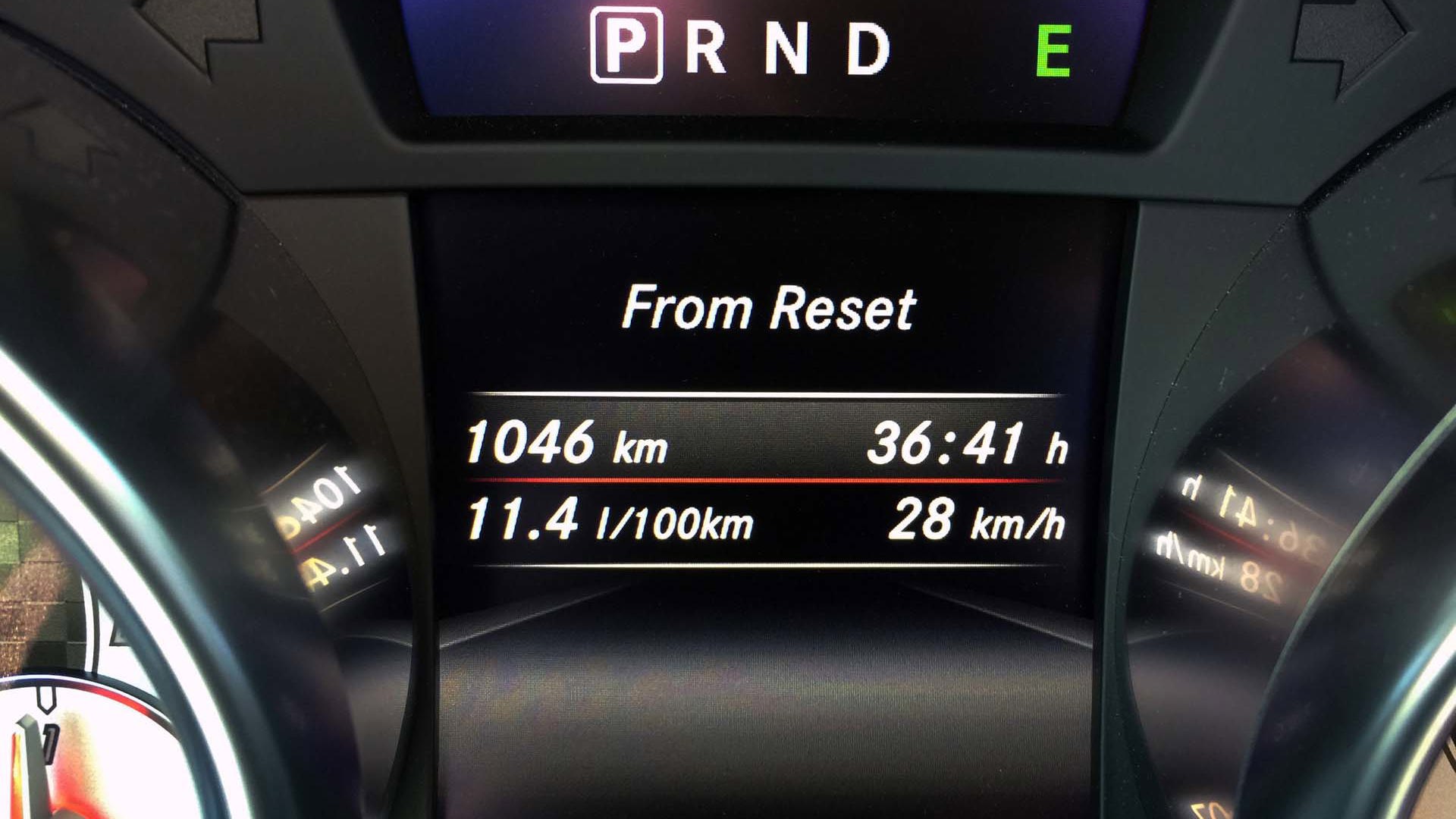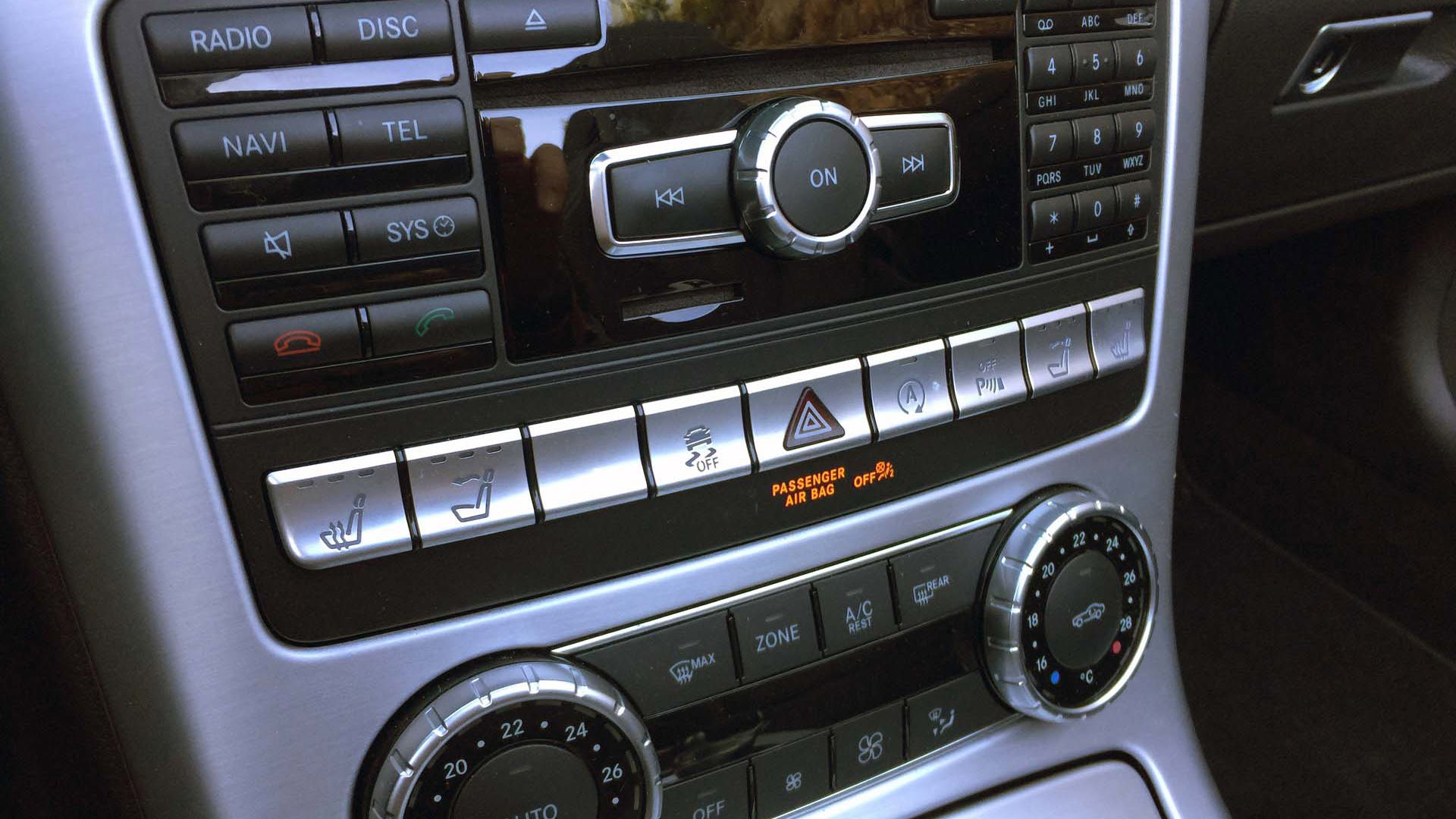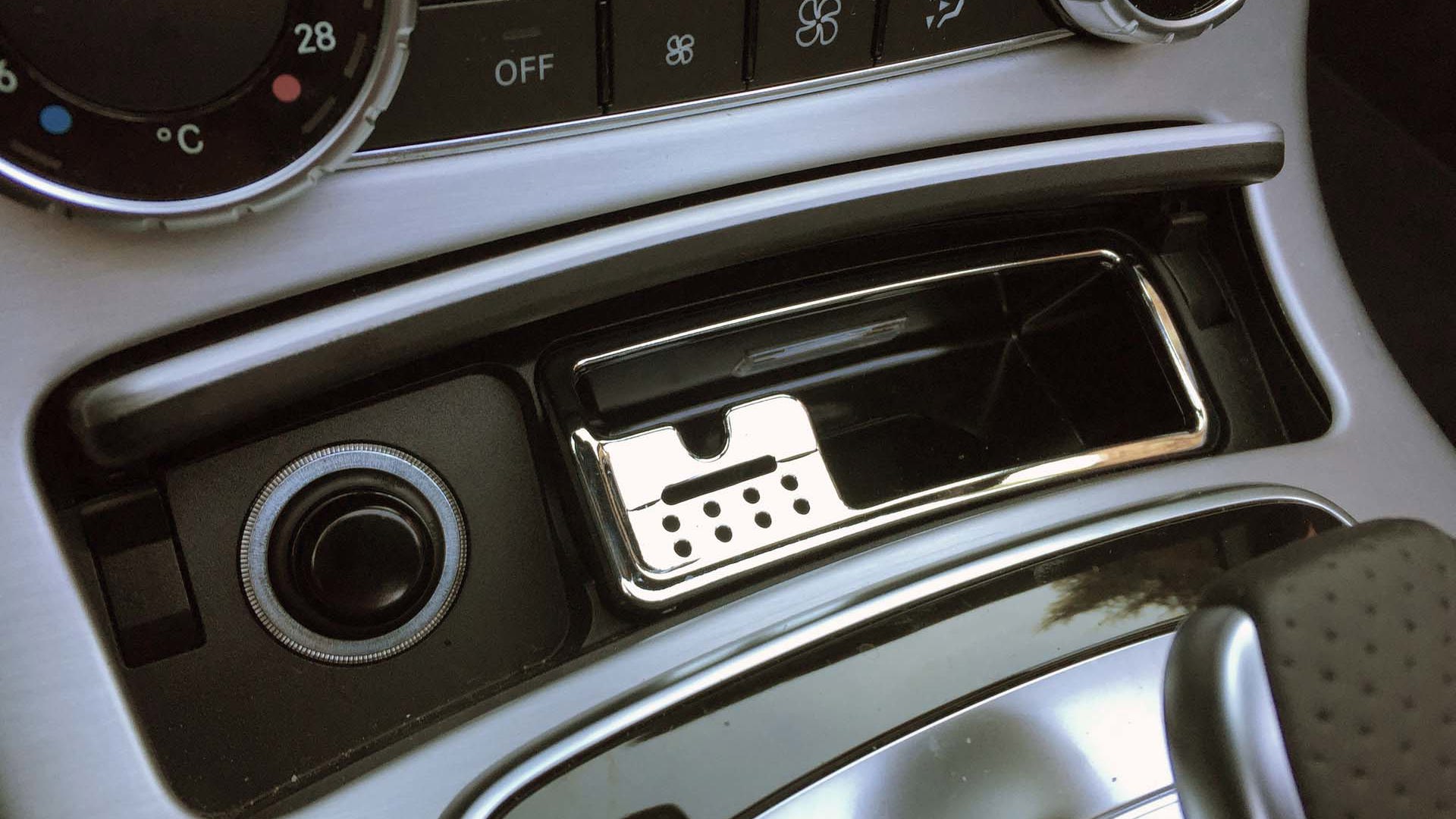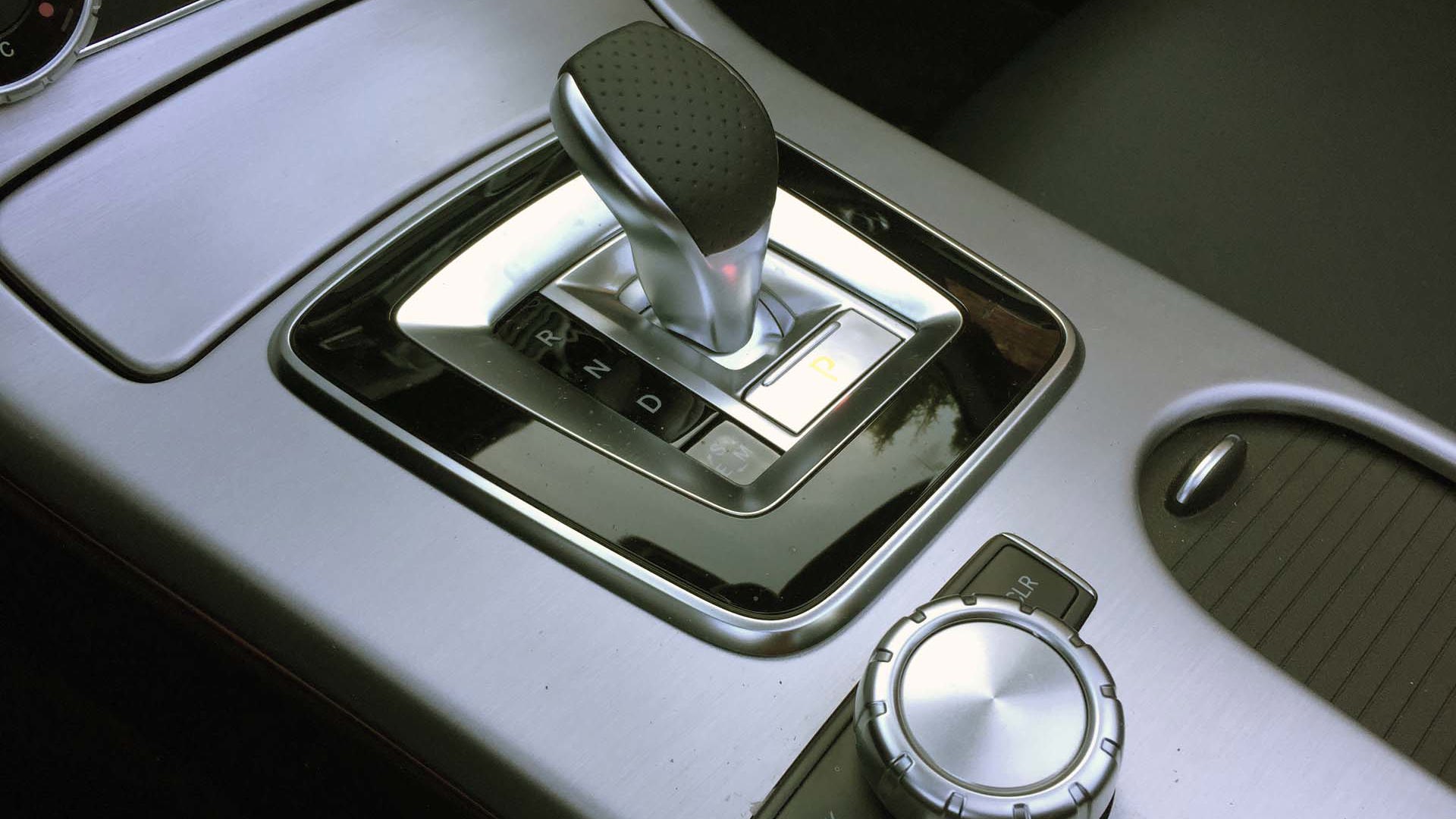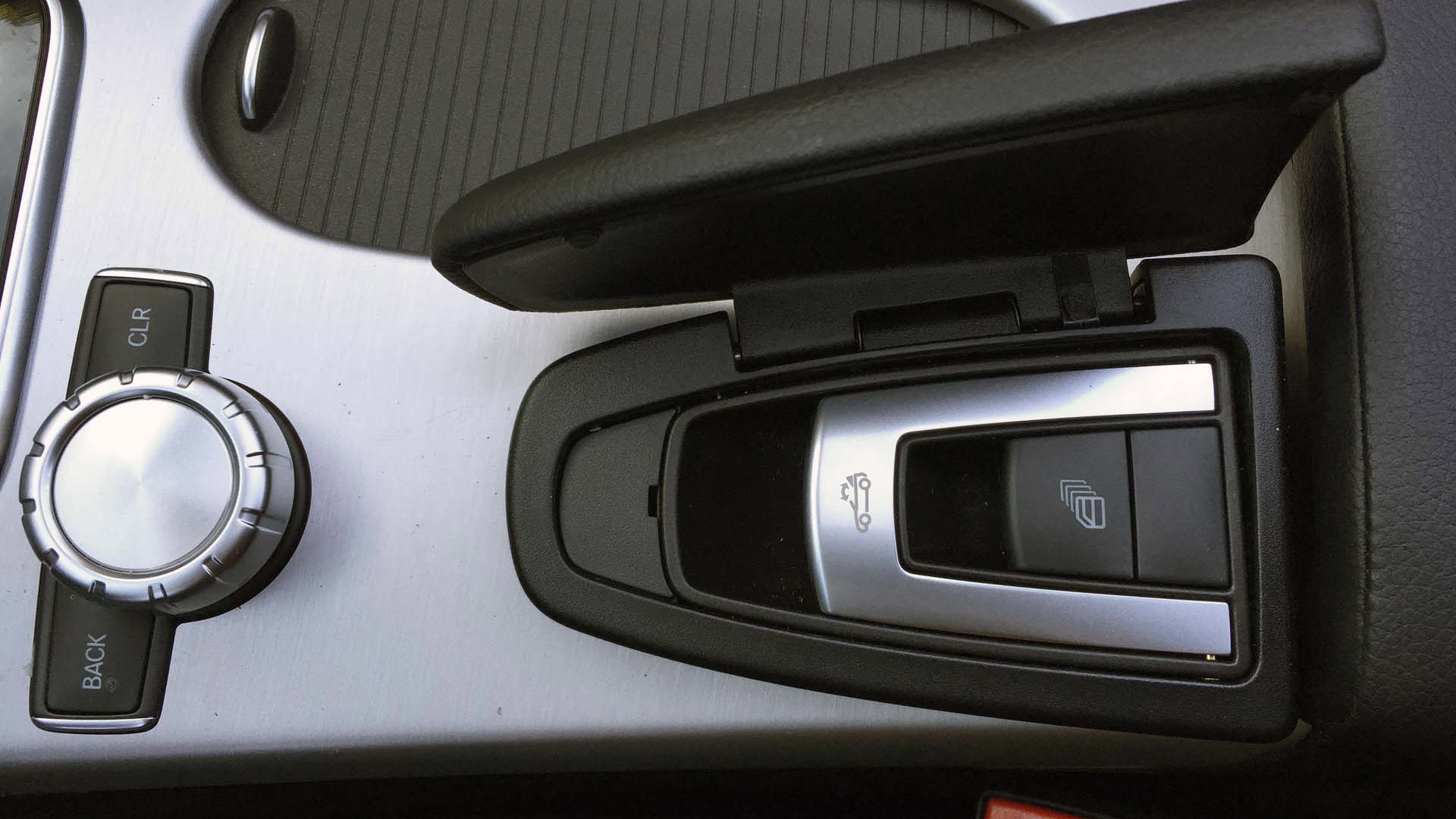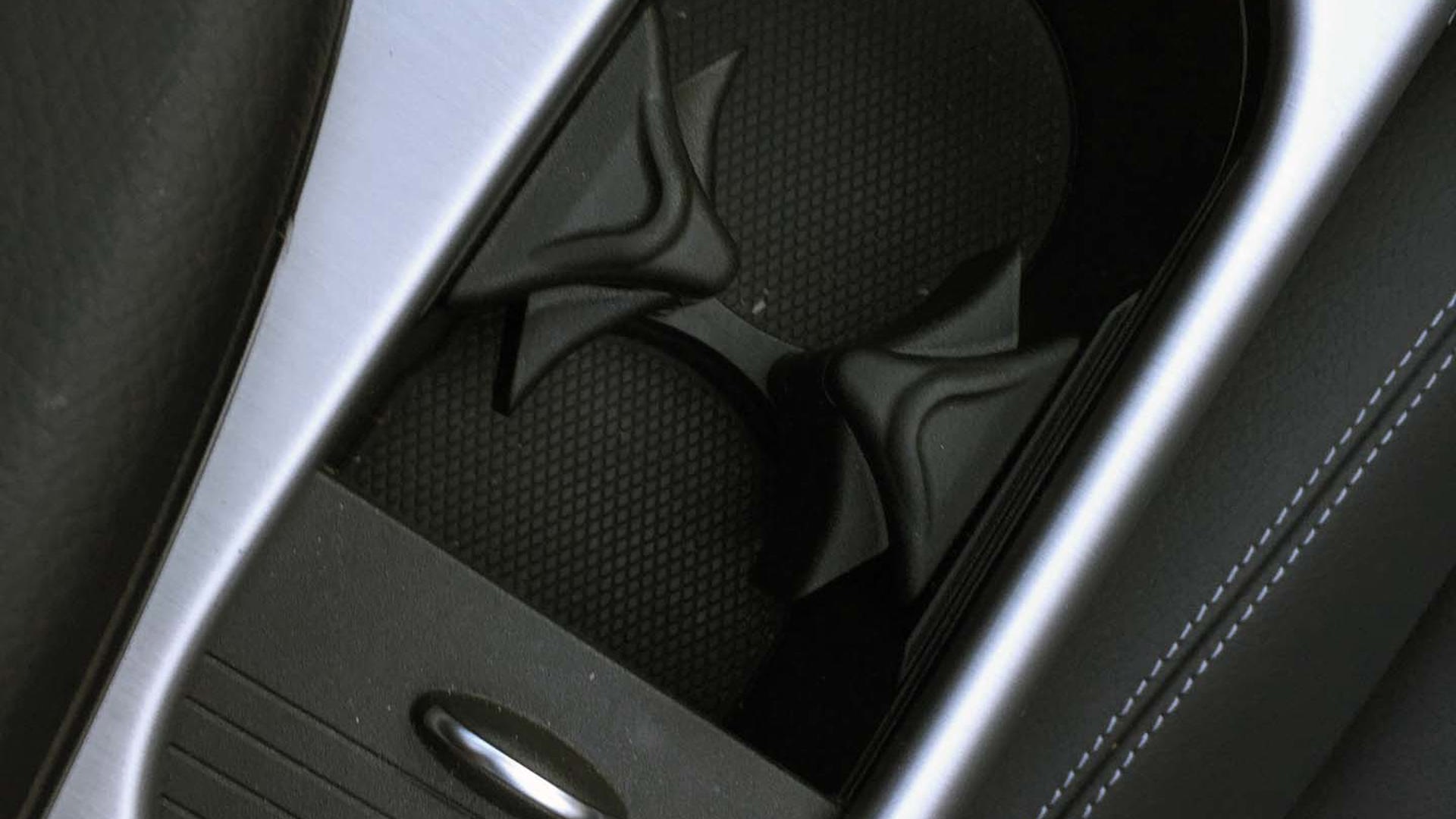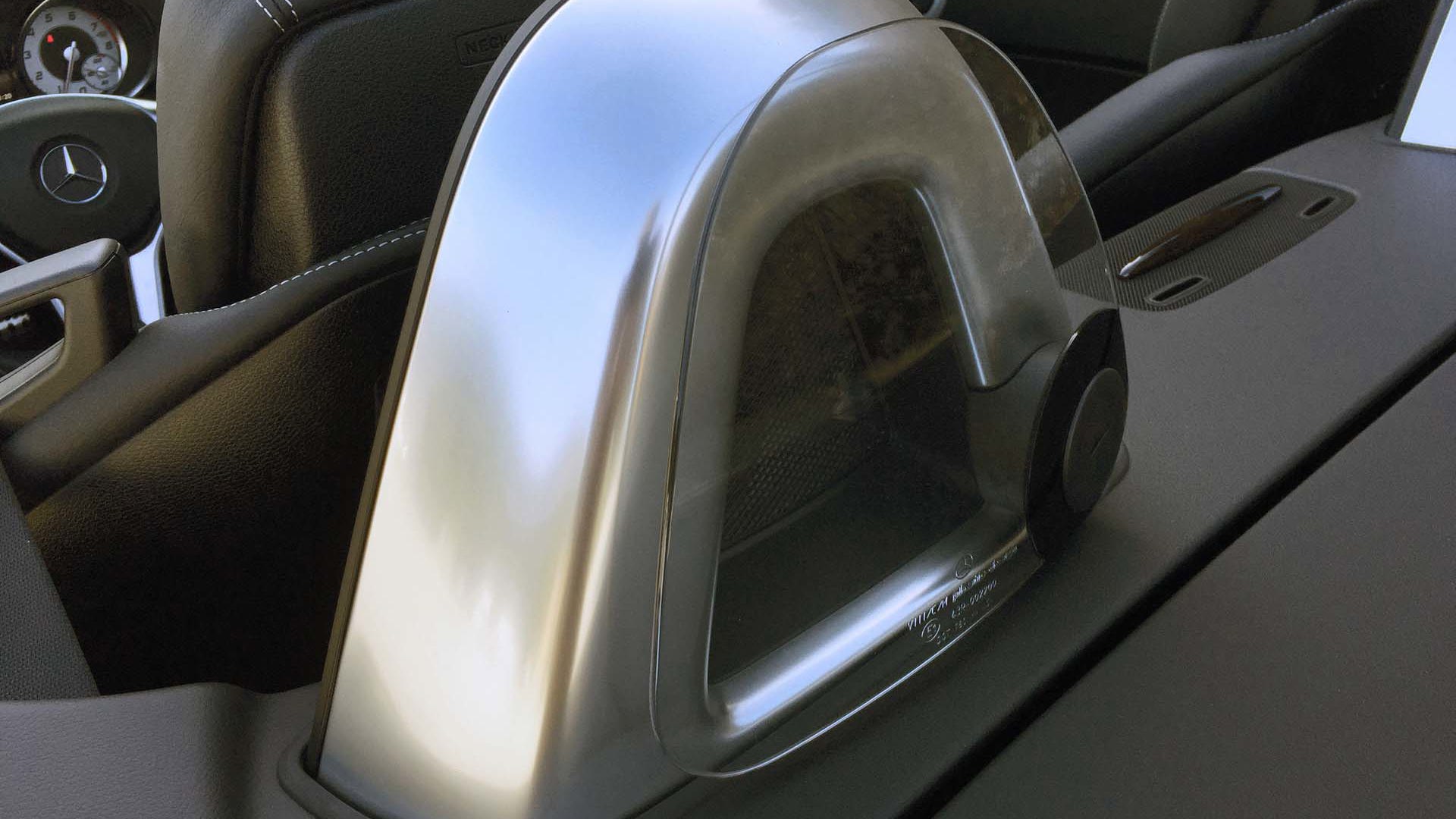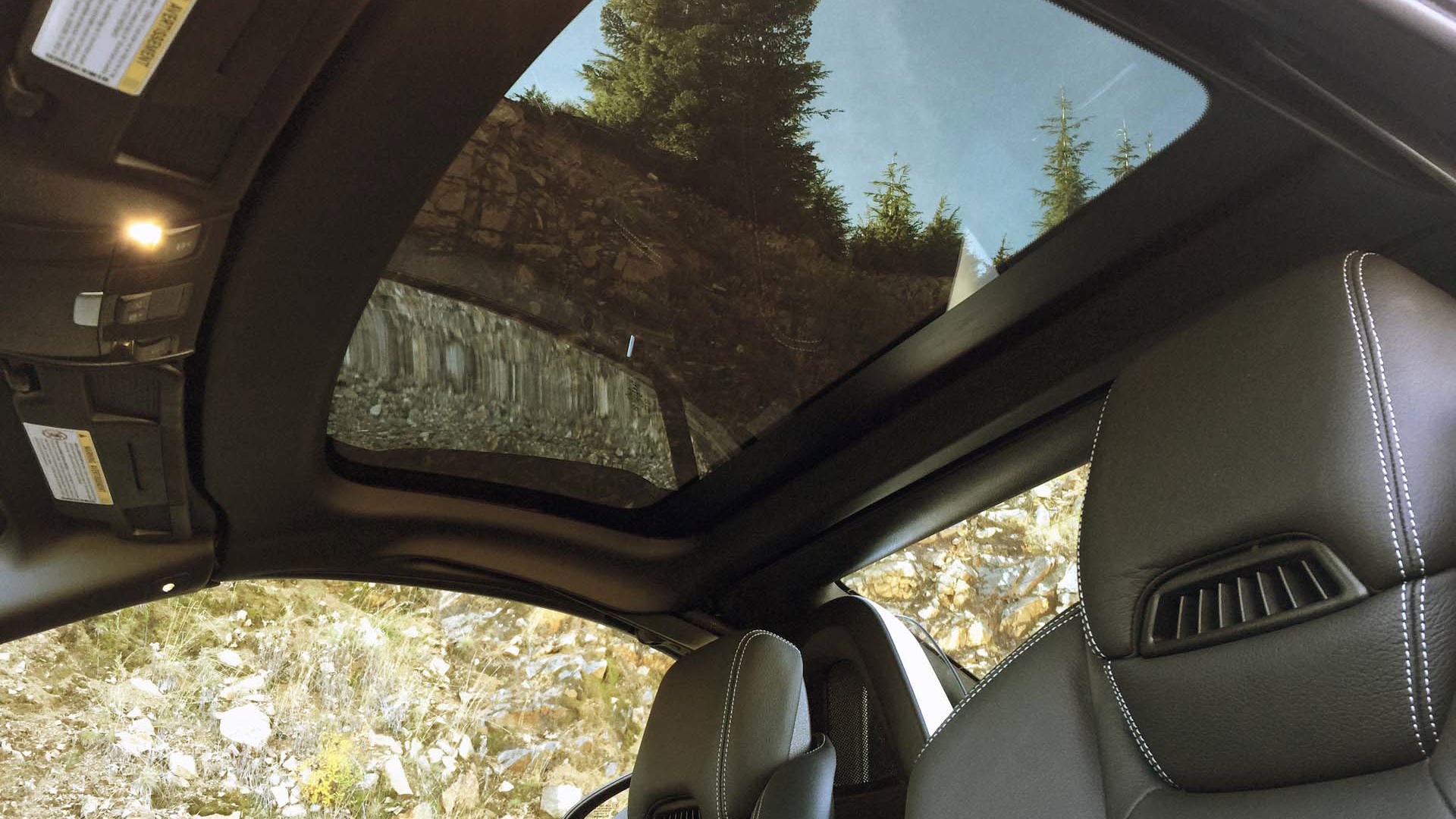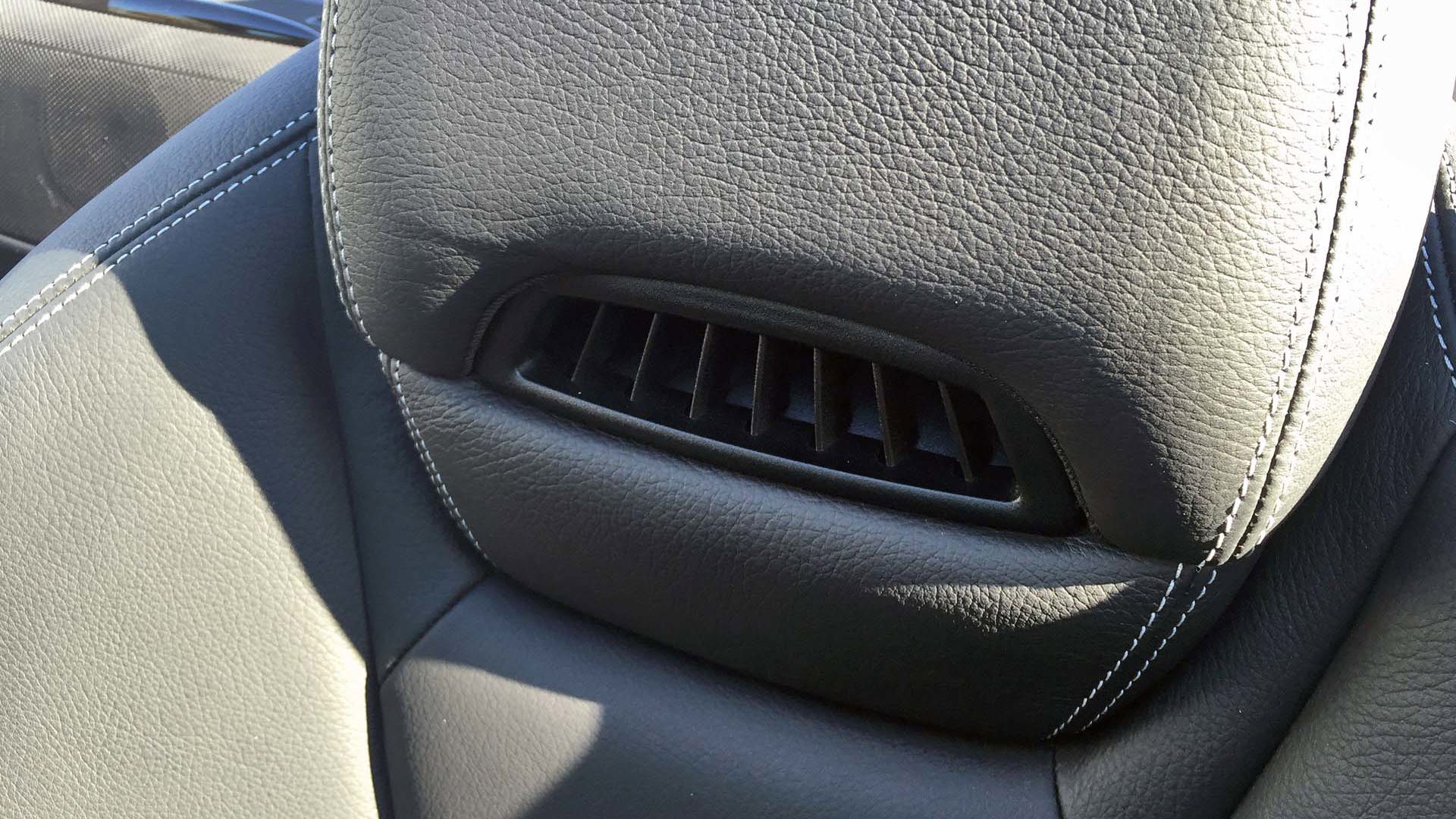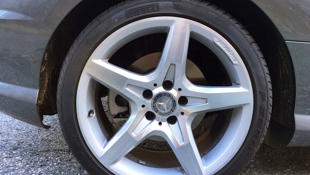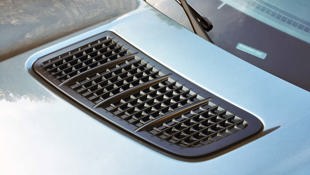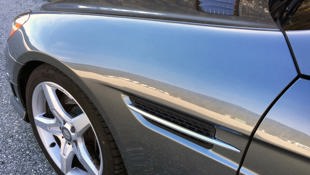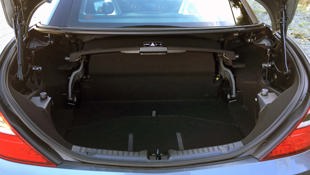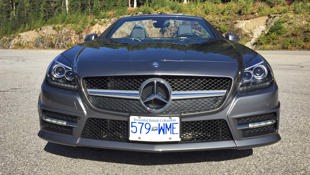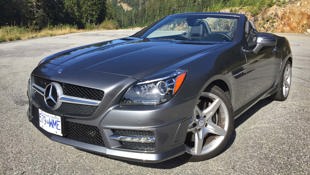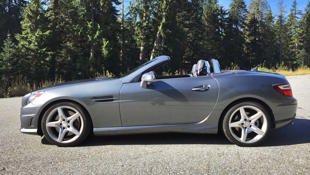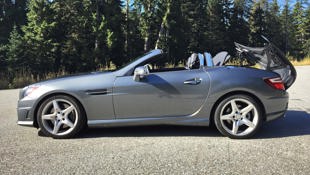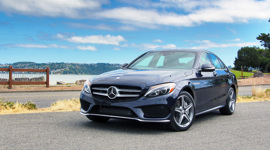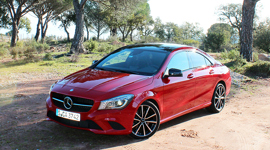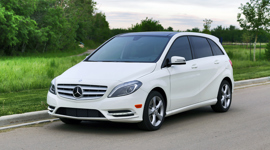 AutoTrader SCORE
AutoTrader SCORE
-
EXTERIOR STYLING7/10
-
INTERIOR8/10
-
PERFORMANCE7/10
-
COMFORT6/10
-
FUEL ECONOMY7/10
For the 2016 model year, the least expensive Mercedes-Benz SLK sports car has been renamed the SLK 300 thanks to a new turbocharged 2.0L four-cylinder engine and a new standard nine-speed automatic transmission which replaces the 1.8L turbo and standard six-speed manual or optional seven-speed automatic transmission of the outgoing SLK 250.
As maximum torque now starts at just 1,300 rpm rather than 2,000 rpm, the SLK 300 feels more responsive off the line with less turbo lag.
Higher up the SLK trim ladder, the 2016 SLK 350 (V6) and SLK 55 AMG (V8) models remain mostly unchanged for 2016. A completely redesigned SLK - probably renamed SLC - is rumoured to arrive for 2017.
Now, when I say the SLK 300 is the “least expensive” model, I don’t mean “inexpensive”. The base price of the 2016 SLK 300 has risen to $58,100, a $5,900 jump over the 2015 SLK 250 with the six-speed manual and $4,400 more than the 2015 SLK 250 with seven-speed automatic. While the 2016 SLK 300 offers more standard features such as automatic climate control, heated seats, and blind spot assist, the price increases seem rather hefty.
Now offering 241 hp at 5,000 rpm and 273 lb-ft of torque from 1,300 to 4,000 rpm, the SLK 300’s extra 41 horsepower and 43 lb-ft of torque provide a modest but welcome boost in performance. Zipping from 0 to 100 km/h in just 5.8 seconds, the SLK300 is .07 seconds faster than the SLK 250 with the manual transmission and .08 seconds faster than the SLK 250 with automatic, according to Mercedes-supplied performance figures. As maximum torque now starts at just 1,300 rpm rather than 2,000 rpm, the SLK 300 feels more responsive off the line with less turbo lag.
Fuel economy is better despite the SLK 300 being slightly heavier and more powerful. According to the EPA, the 2016 SLK 300 with the nine-speed automatic delivers fuel economy ratings of 9.4 city/7.4 hwy/8.4 combined while the 2015 SLK 250 offered 10.2/7.1/9.0 (automatic) and 10.7/7.4 /9.0 combined (manual). Still, being a sports car with a turbocharged engine, the SLK 300’s real-world fuel consumption will vary widely depending on how it’s driven. Our tester’s fuel consumption readout was showing an average of 11.4 L/100 km after being driven for the past couple of months by over-excited auto writers.
The loss of the SLK’s standard six-speed manual is a blow for enthusiast drivers of whom, apparently, there weren’t enough for Mercedes to continue offering it. It’s a shame really. What’s a small sports car without a manual transmission? It certainly takes some of the fun out of driving one. Admittedly, the SLK was always more of a luxury sports car than a driver’s sports car like an MX-5 or S2000 and it’s likely that few SLK owners will miss it. Still, it’s another nail in the coffin for the traditional manual transmission.
As before, the SLK’s automatic transmission has driver-selectable Eco, Sport and Manual modes activated by pressing a small button marked E-S-M beside the shift lever. Eco mode alters transmission shift timing to maximize fuel economy, Sport mode offers more aggressive shift timing to enhance performance, and Manual mode allows the driver to shift gears manually using the paddles behind the steering wheel.
Dreaming of the AMG version? Evolution of AMG
While Eco mode saves gas, it also reduces performance because the transmission is always searching for the highest possible gear. This works well on the freeway where the engine tootles along at under 1,800 rpm in top gear but in day-to-day driving, it tends to sap the fun out of the performance. Eco mode also helps recharge the battery when coasting, an unexpected feature to find in a sports car. Another fuel-saving feature is automatic start/stop which automatically turns off the engine while paused at a traffic light and restarts it automatically when the brake pedal is released. I found the SLK 300’s automatic restart to be a bit jerky and it quickly became tiresome in stop-and-go traffic. Fortunately, a button on the dash allows it to be deactivated if desired.
Sport mode makes the SLK more exciting to drive by gearing down sooner and holding shift points longer. It brings the SLK 300 to life out on the open road, but I found it a bit too aggressive for daily commutes. Manual shifting with the paddles gives the driver maximum control over shift points without having to take hands off the steering wheel, but it is best used on challenging roads outside the city limits where it becomes pleasurable rather than tedious.
Being a low, wide sports car with rear-wheel drive, a fully independent suspension and low-profile 17-inch radials (our car had optional Pirelli P Zero 225/40ZR18 front and 245/35ZR18s rear), the SLK 300’s handling is nicely balanced with very little lean in hard cornering. The surprise for me was its comfortable ride. It’s not a sports car that will punish you on uneven road surfaces. The suspension soaks up bumps well and you can live with this sports car on a day-to-day basis. Our SLK 300 didn’t have the optional Dynamic Handling Package that automatically adjusts suspension stiffness to road surfaces, but I didn’t find this to be a disadvantage. Admittedly, rear-wheel drive is not the ideal setup for winter driving, but the SLK has traction, stability control and ABS to counter skidding and sliding tendencies.
As the SLK is so low, you have to drive defensively because other drivers (particularly in SUVs and pickups) don’t always see you when changing lanes. Also, watch out for concrete curbs when parking: the SLK’s wide front air dam is very low and isn’t high enough to clear curbs in many parking lots. In this regard, I really appreciated our tester’s front and rear parking sensors, but was surprised that it didn’t have a rearview camera. The driver’s vision to the rear with the top up is hampered slightly by a thick rear window pillar that incorporates the folding top mechanism.
The SLK’s clever power folding hardtop folds into the trunk in just 12 seconds and when lowered, there’s even some trunk space underneath it. Wind buffeting with the top down and the side windows up is minimal and to keep you warm, Mercedes’ AirScarf system vents warm air to the back of the neck from vents under the head restraints. As well, to limit wind buffeting, two clear plastic shields behind the rollover hoops can fold over to partially cover the open area between the roll hoops. With the heater blowing warm air to your feet and chest, the open-air SLK 300 is very comfortable even on a cold winter’s day. Just bring a hat, driving gloves and a jacket that zips up to the neck.
With the top up, the SLK 300 is transformed into a coupe. The top seals the cabin tight. There are no wind whistles or water leaks and the cabin is much quieter. With its glass rear window and defroster, visibility to the rear is much better in winter than with traditional plastic rear windows. The folding hardtop also offers better security from thefts and break-ins. The SLK’s folding hardtop even has a non-opening tinted glass sunroof that provides extra lighting in the cabin on a gloomy day. Optional is a “Magic Sky” sunroof that can turn dark or light with the touch of a button.
As you might expect in a sports car that starts at over $58,000, the SLK 300’s interior uses top-quality materials and the fit and finish is excellent. However, it’s a bit surprising that Artico (simulated leather) seats are standard and leather is a $1,990 option. Then again, not everybody wants leather. A variety of colour options are available: upholstery colour choices include Black, Beige, Grey, Red, and Mocha Brown while interior trim is offered in Brushed Aluminum, Burl walnut, Dark Ash and Carbon fibre.
Getting in and out of the SLK isn’t as difficult as it might look even though the SLK’s doors are rather heavy and there’s a lip to step over. The SLK’s nicely-contoured seats have huge side bolsters and smaller thigh bolsters for support and standard seat heaters with three settings. Both front seats have power fore/aft, height, recline, and lumbar in/out adjustments, so you can get really comfortable.
Our test car had black leather seats with contrasting white stitching on the seats and black stitching on the leather-wrapped steering wheel. The brushed aluminum trim in our test car looked great but I discovered a couple of scratches near the centre control dial. And I noticed that the silver trim around the air vents, gauges and steering wheel is not real aluminum, but plastic. Complementing the look of the aluminum and silver trim are silver-faced gauges with black numerals. These are illuminated at night but in the daytime I found the speedo difficult to read with my sunglasses on.
Between the gauges is an information display that includes such info as average fuel consumption, current fuel consumption, and range. The driver can scroll through the different screens using the arrows on the left steering wheel spoke. There’s also an interesting Eco display with three bar graphs showing fuel use when accelerating, coasting and in constant driving. But is this really appropriate in a sports car? I can’t see many SLK drivers fretting over their fuel consumption.
Between the seats is a large round control dial to operate the audio, telephone and navigation functions on the centre screen. Similar to a mouse, the controller allows the driver to navigate through the screen menus by turning, swivelling and pushing the dial. A palm rest just behind it makes it easy to rest your right hand while operating the dial with your fingers. I found the screen graphics easy to read, but the screen menus are more complicated to navigate than some competitors systems because there are too many steps and the choices aren’t always obvious. Still, you can learn how to use it by trial and error without having to look at the owner’s manual.
For storing phones, cameras and small tablets, there is a roomy storage bin under the centre padded centre armrest. There’s also a pouch behind the driver’s seat and a coat hook on the back of the seats.
I was surprised to see an ashtray and cigarette lighter under a folding cover in front of the shift lever.
With the top up, the 335L trunk can hold a couple of suitcases for a weekend journey but with the multi-panel top folded into the trunk, space is reduced to 225L and it’s only accessible through a narrow gap. To prevent luggage being squashed by a descending hardtop, a trunk panel needs to be lowered into place before the top can be lowered.
The 2016 SLK 300 has a base price of $58,100, but options can soon boost that price to over $70,000, and you could argue that many of the SLK’s options should be standard equipment. Our test car had optional black leather upholstery ($1,990) and the Premium Package ($5,600) that included a 500-watt Harman Kardon audio system, Keyless Go, swivelling bi-xenon headlights, sunroof, AirScarf neck heaters, Navigation with MB apps, and Sirius satellite radio. It also had the optional Sport Package ($1,800) which included AMG bodywork, 18-inch tires and AMG wheels, Sport Brake System, AirGuide and aluminum roll hoop inlays; and Parktronic ($900) with front and rear parking sensors.
Additional options available on the SLK 300 include the Dynamic Handling Package, Adaptive High Beam Assist, and Magic Sky Control.
With Freight and PDI charges, our SLK 300 tester came to over $70,000 before tax. That’s a lot of dough for a compact sports car, even a Mercedes-Benz compact sports car - but it’s not out of line with the price of competitors like the BMW Z4 sDrive 28i and Porsche Boxster.
If it wasn’t for lengthy leasing terms and low interest rates, I wonder how many buyers could afford these pricey sports cars?
The 2016 Mercedes-Benz SLK 300 is built in Bremen, Germany.
| Warranty: 4 years/80,000 km; 4 years/80,000 km powertrain; 5 years/unlimited distance corrosion perforation; 4 years/unlimited distance roadside assistance Competitors: |
| Model Tested | 2016 Mercedes-Benz SLK 300 |
|---|---|
| Base Price | $58,100 |
| A/C Tax | $100 |
| Destination Fee | $2,495 |
| Price as Tested | $70,985 |
|
Optional Equipment
$10,290 (black leather upholstery $1,990; Premium Package $5,600; Sport Package $1,800; Parktronic with parking guidance $900)
|
|
